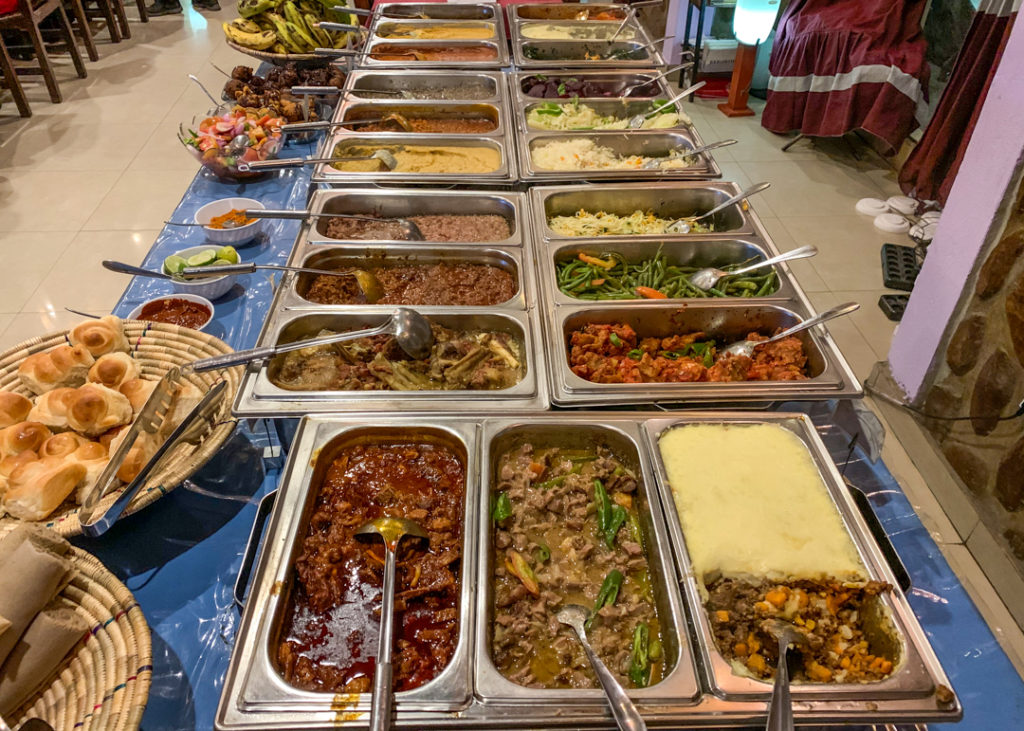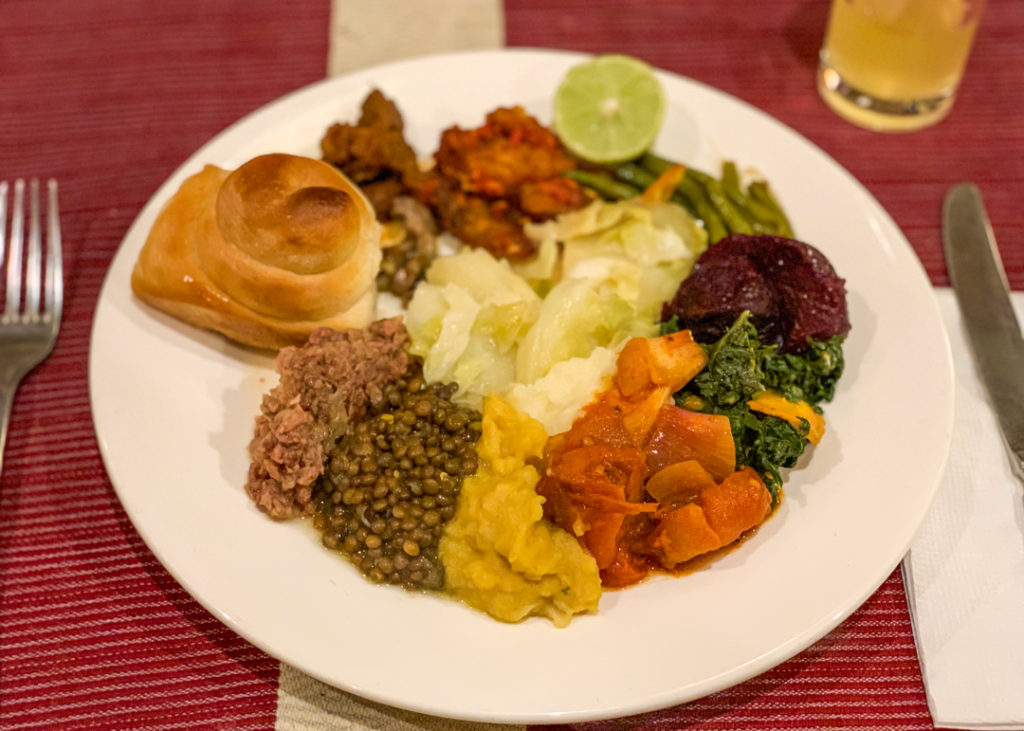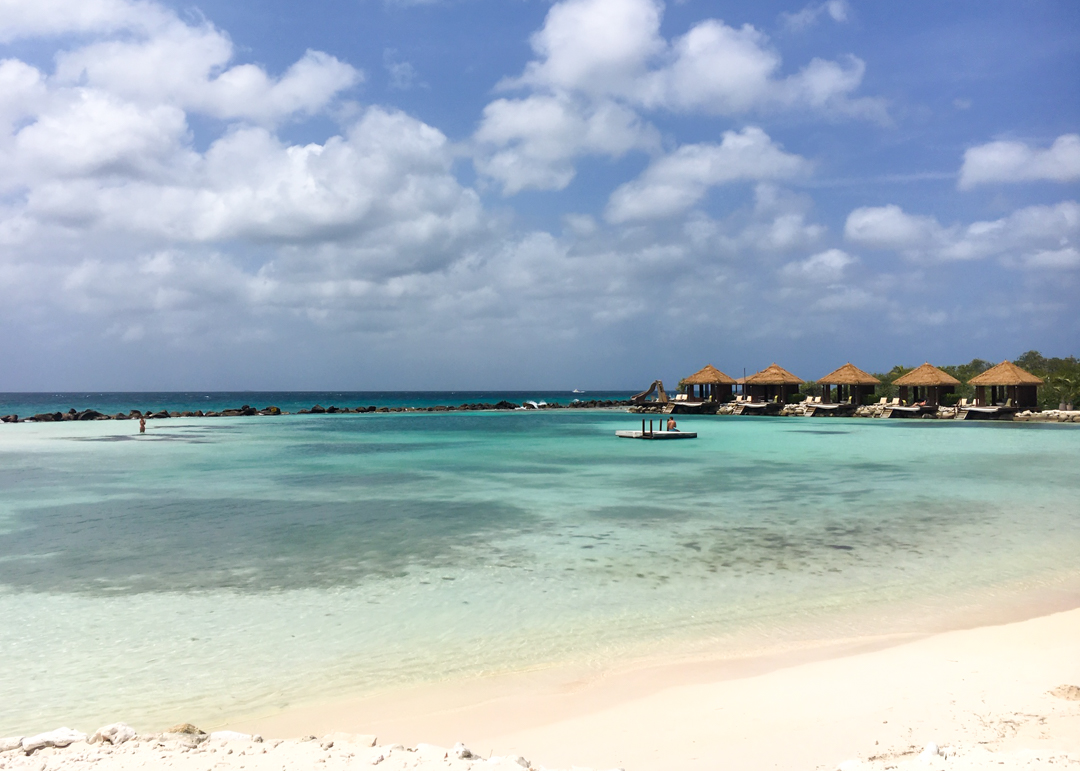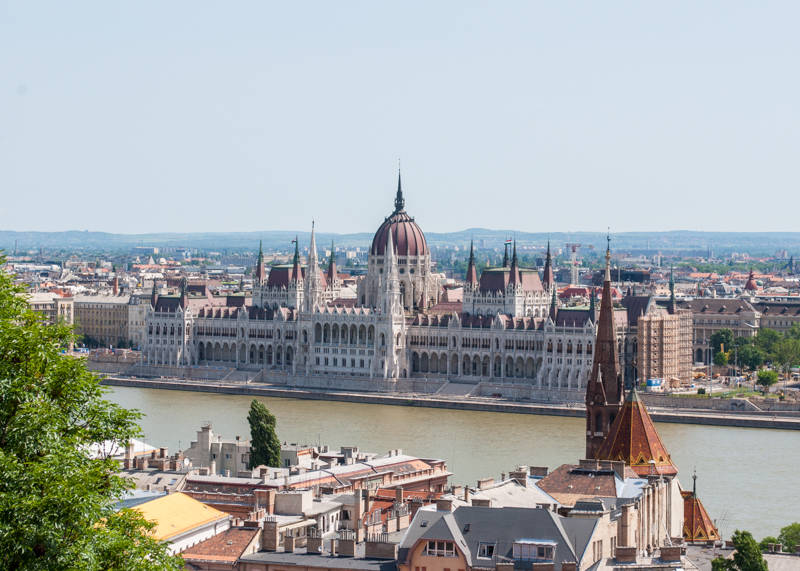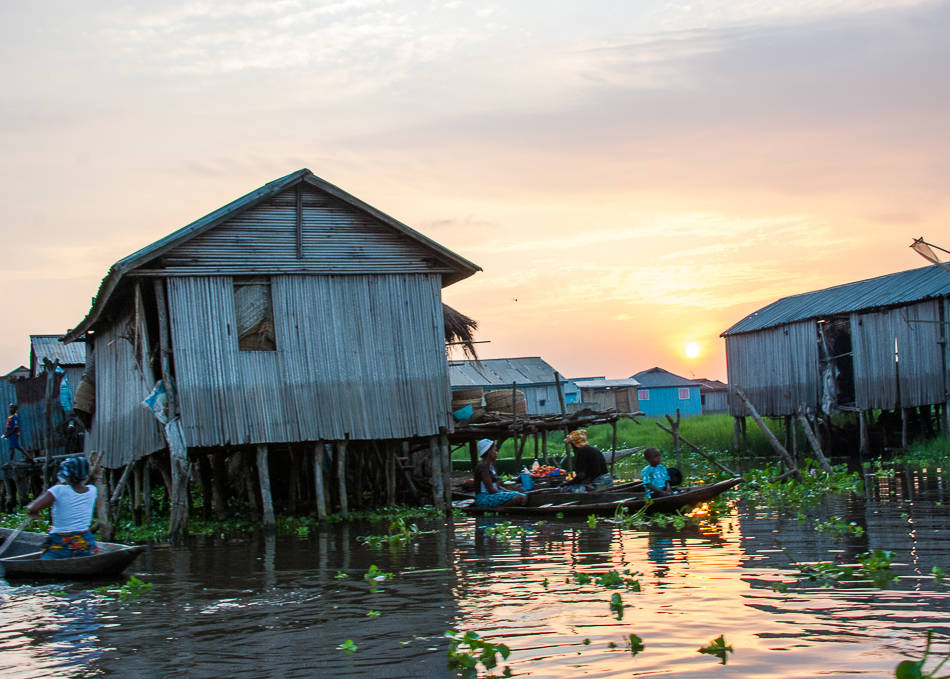After the highs of the Simien Mountains, we came down slightly in altitude to the ‘comfortable’ 2,300 m elevation of Gondar. Arriving in the town’s center, lined with simple buildings from the Italian era, one can’t miss Gondar’s most famous historical figure proudly standing atop the roundabout: Emperor Fasilides. You’ll see his name quite often in the former capital of Ethiopia of which he was the founder.
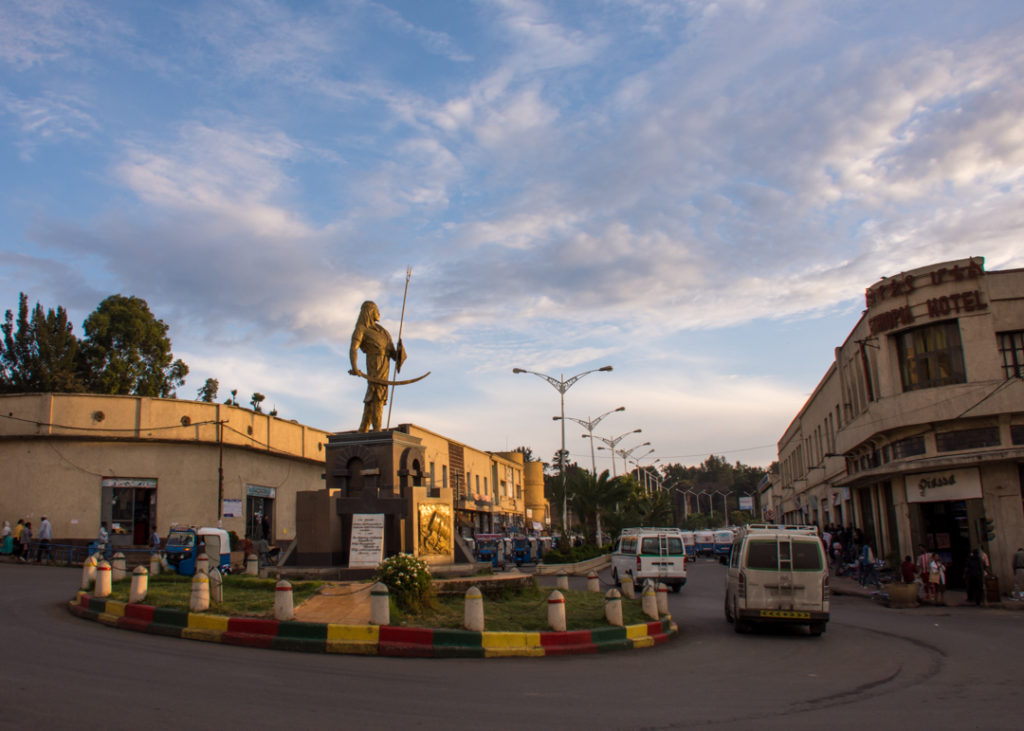
Gondar has an incredibly rich history and a number of impressive sites to visit which we’ll get to in a moment, but it’s worth noting just how pleasant the city is to explore despite its considerable size (population is estimated at 600,000).
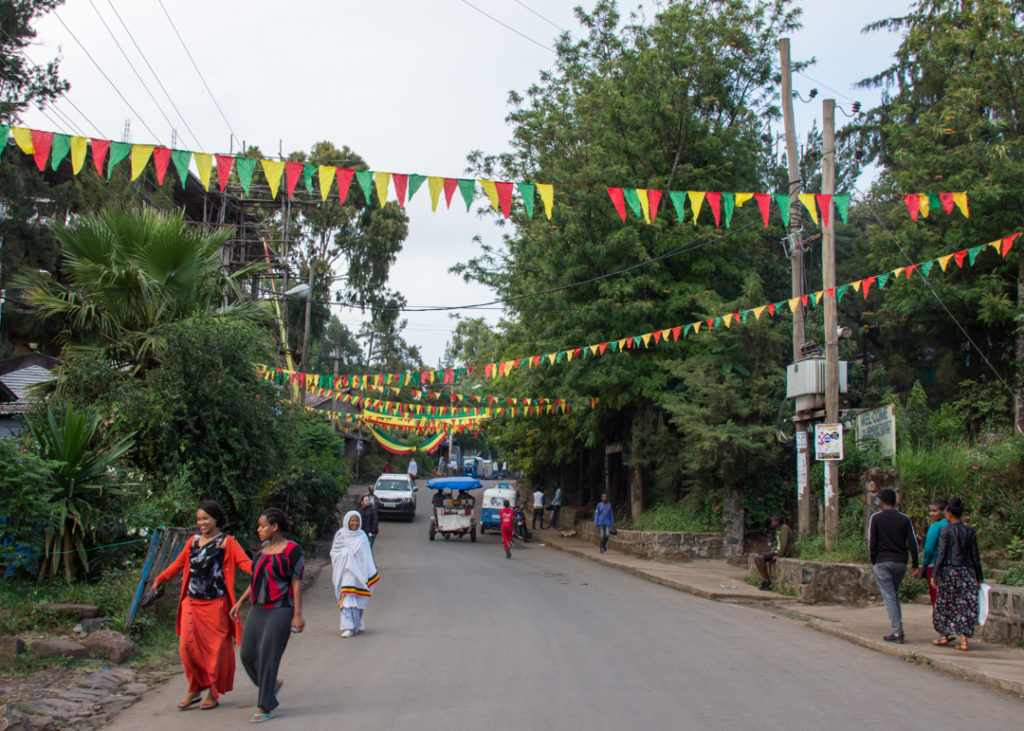
There’s a real laid-back atmosphere, tons of greenery, cattle sharing the road with tuk-tuk and remnants of festivities everywhere – it essentially feels like a huge welcoming village.
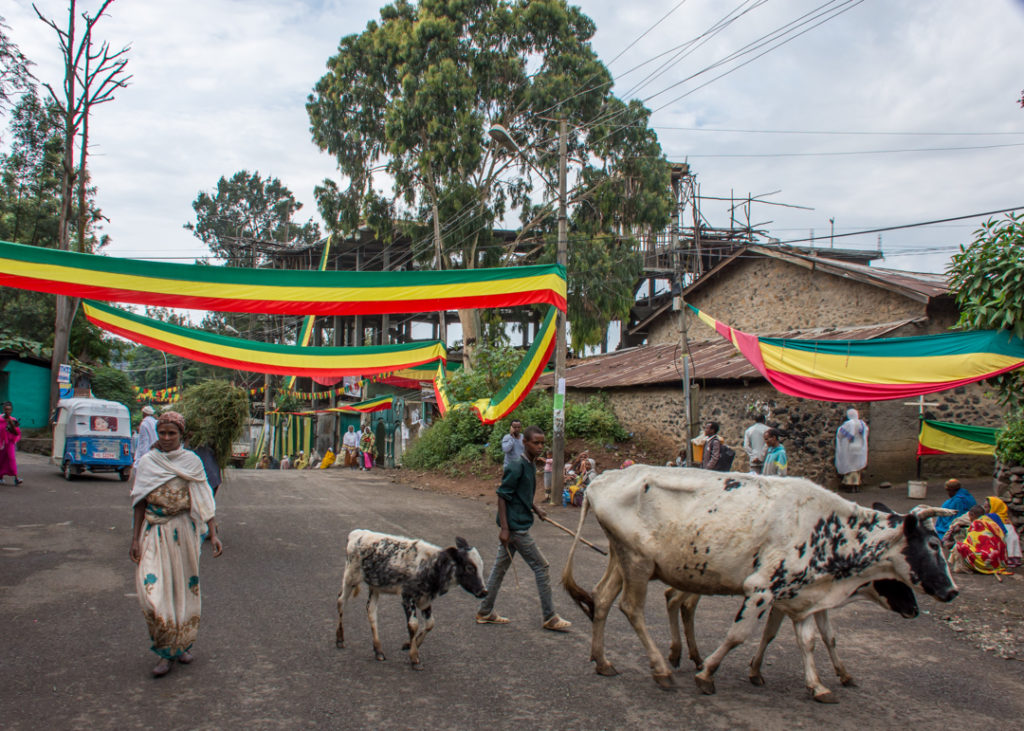
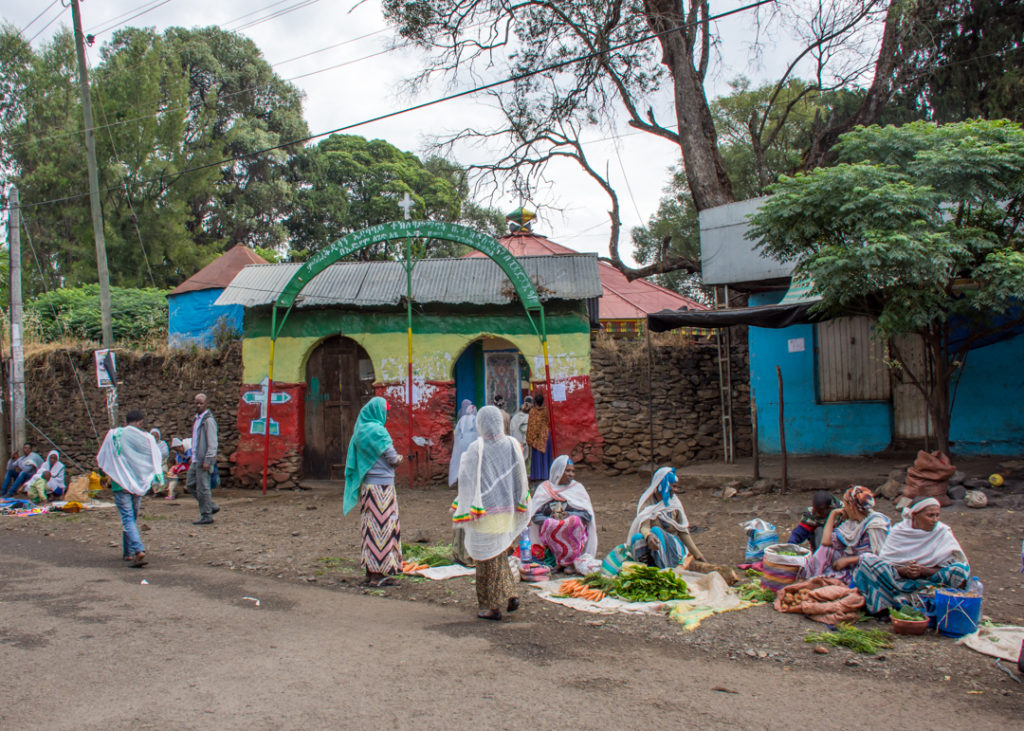
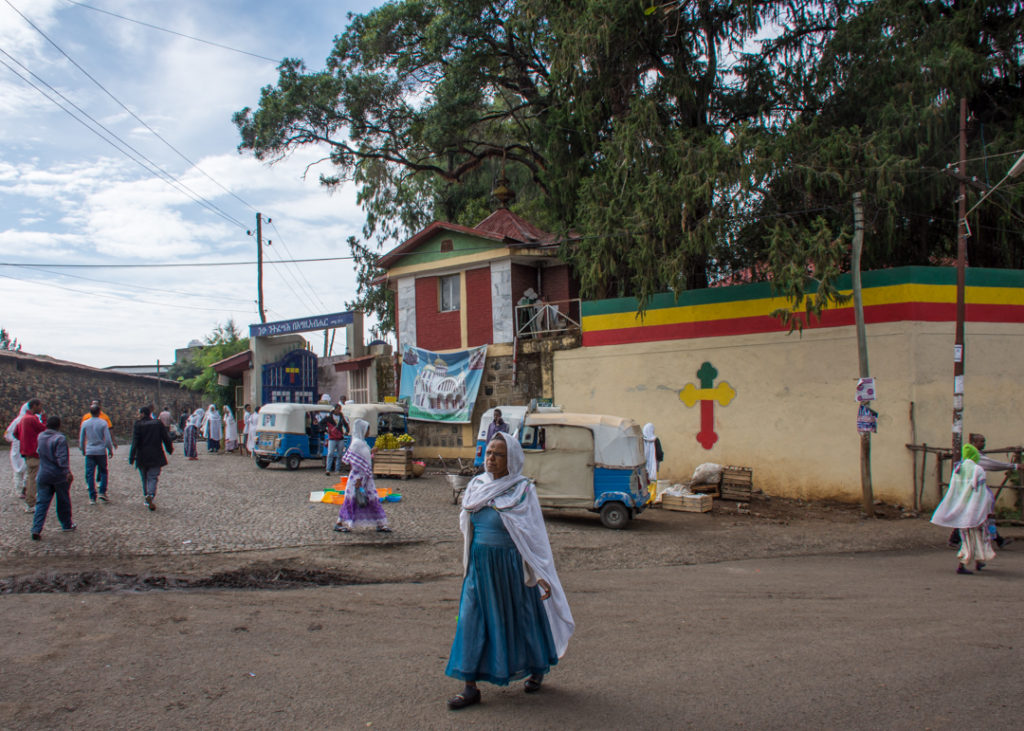
Remains of the fortress city Gondar once was lend a medieval air to the compact center.
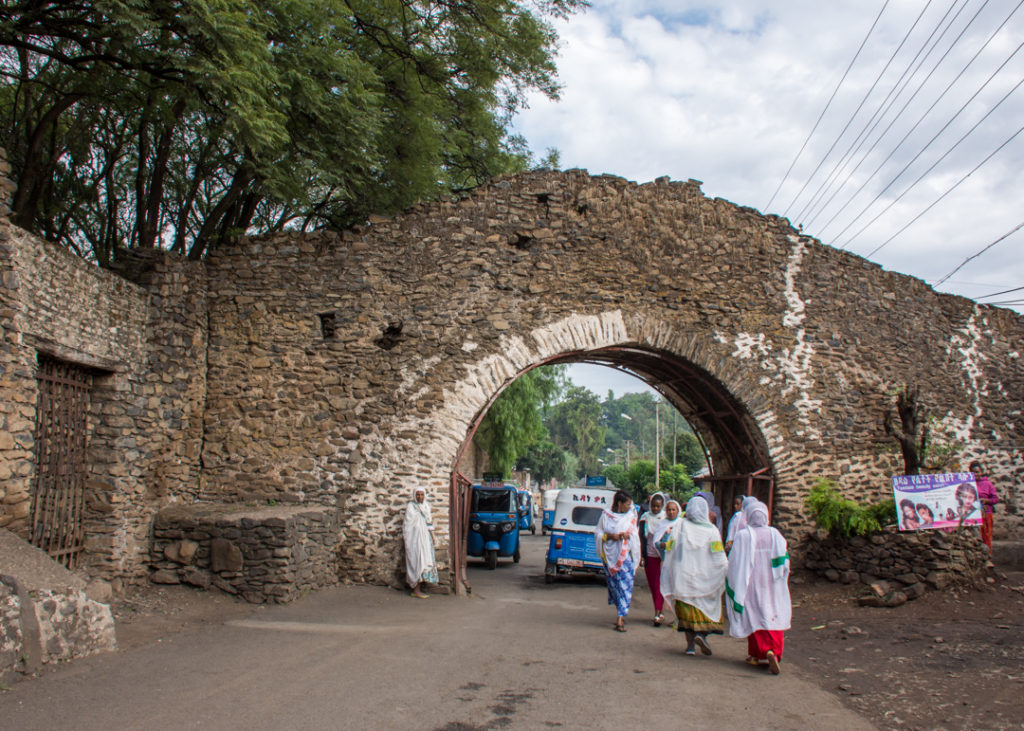
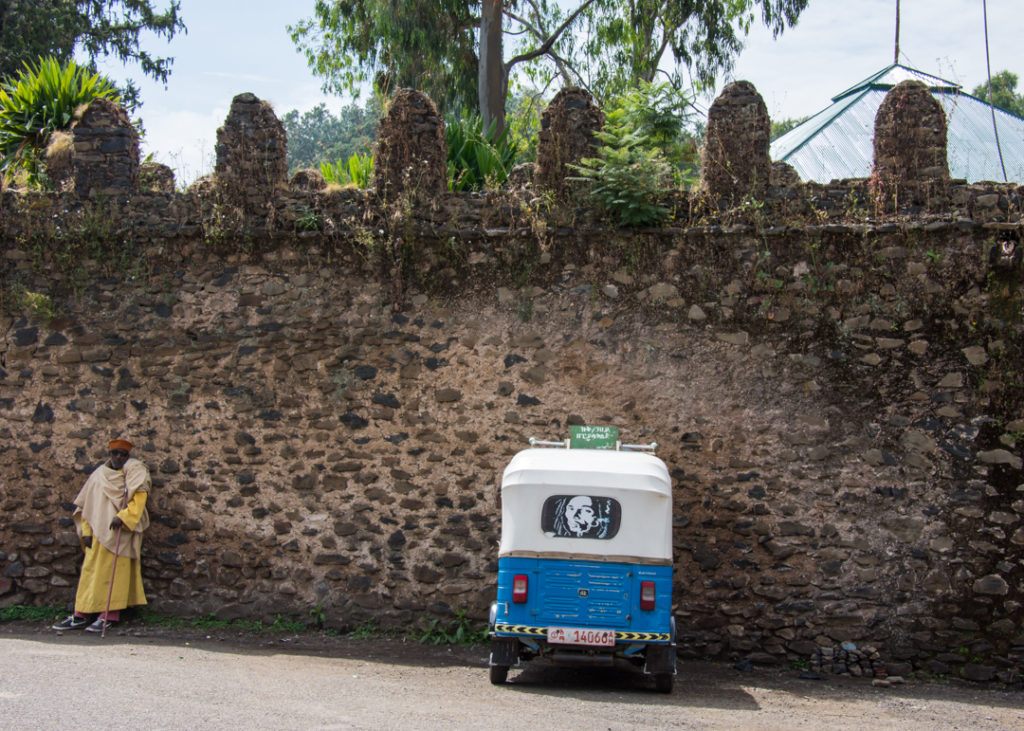
Gatherings are joyful and frequent, whether it’s a school graduation with parents and family eagerly waiting for young students…
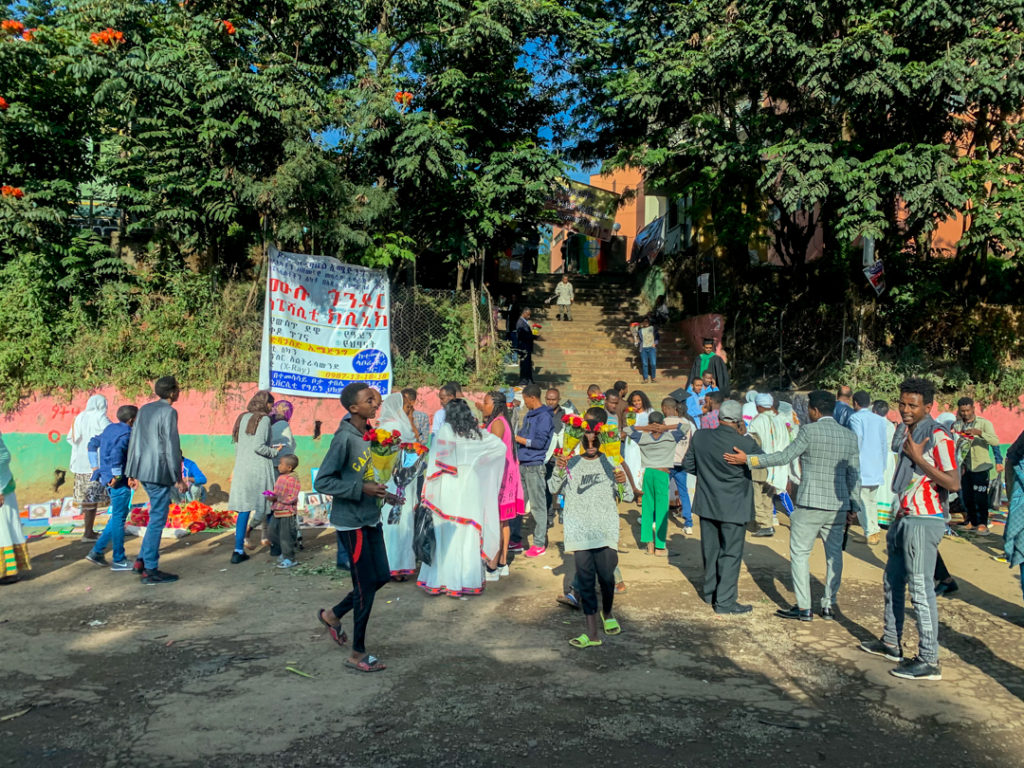
…or the morning church service held in the plaza as it’s probably the only place able to fit everybody!
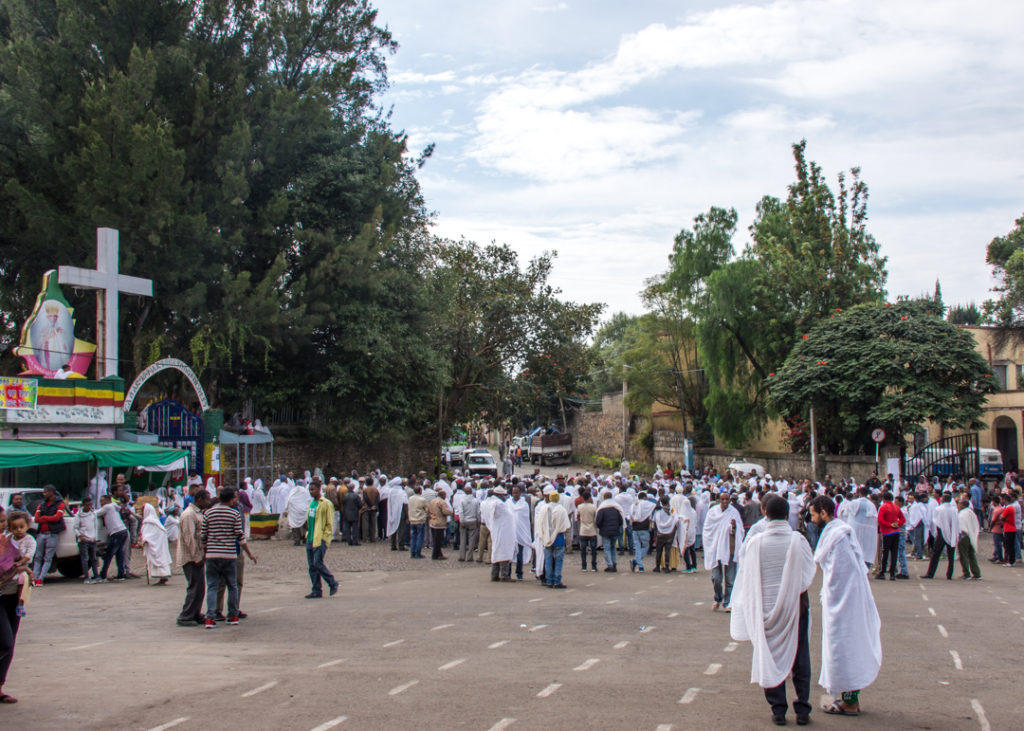
At the heart of this charming town, you’ll find the impressive royal compound of Fasil Ghebbi which is also known as the Camelot of Africa.
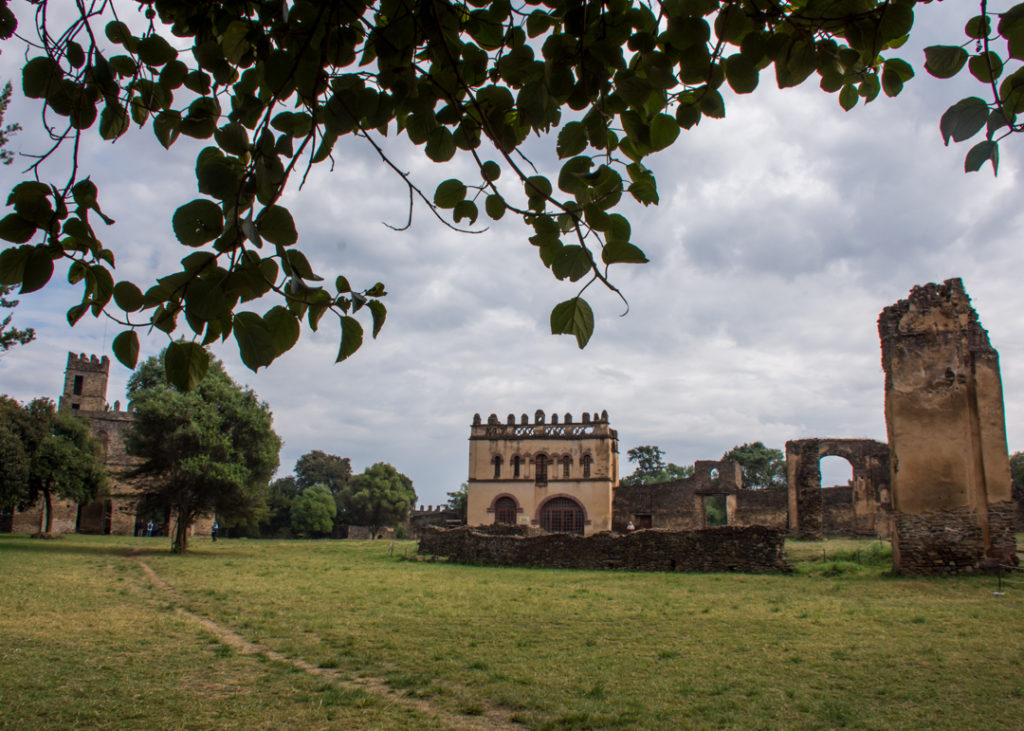
Staring at a cluster of medieval castles and palaces is not what one usually expects when sightseeing in Africa and yet here they are – proofs of Ethiopia’s long-running royal dynasty.
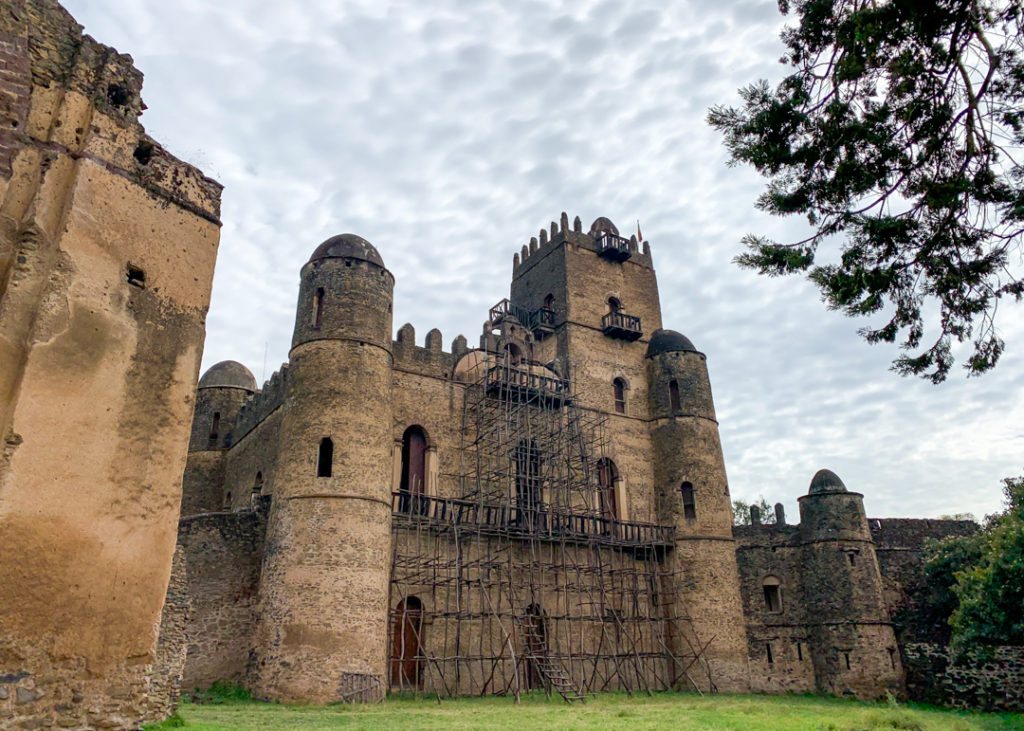
The UNESCO site dates from Gondar’s imperial heydays in the 17th and 18th centuries when it was established as Ethiopia’s capital. For over two centuries it was home to a series of emperors, religious tensions, bloody royal murders and all the scandal you can expect from a medieval empire.
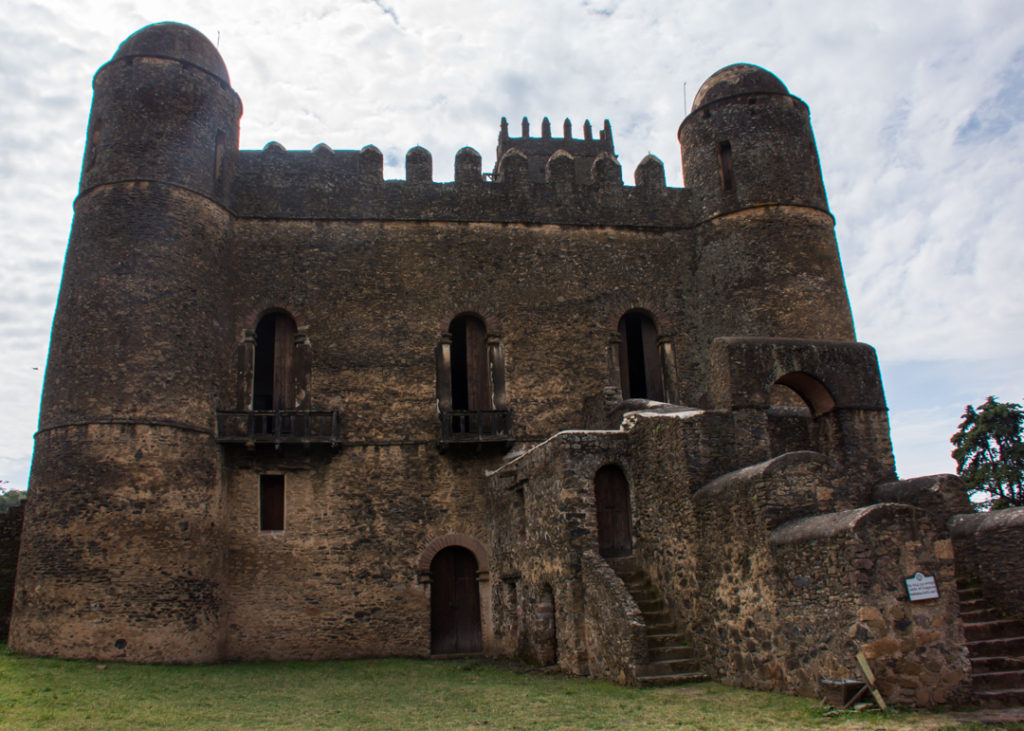
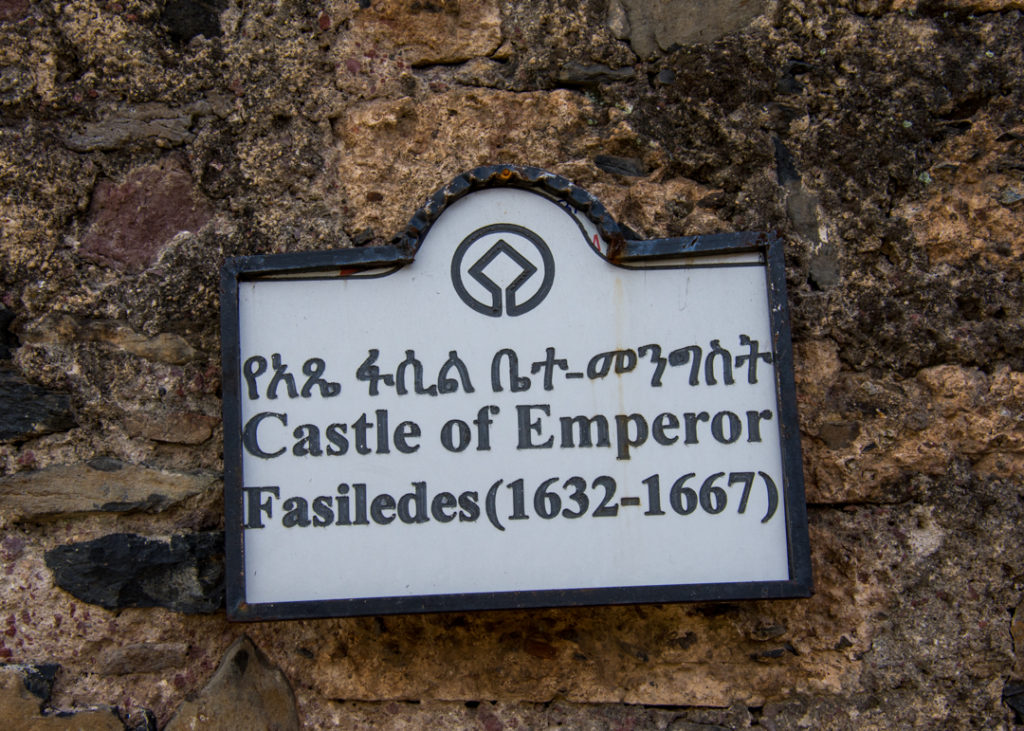
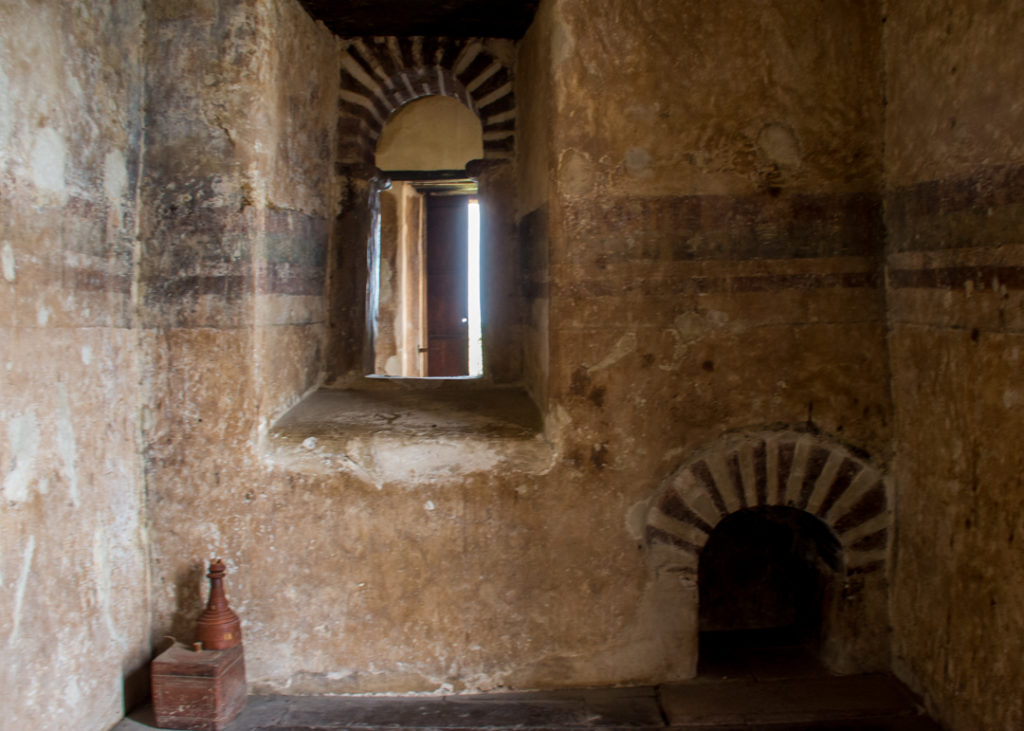
900 meters of walls and towers encircle the fortress city which contained three castles, three churches and a few other notable buildings such as a library and banquet hall.
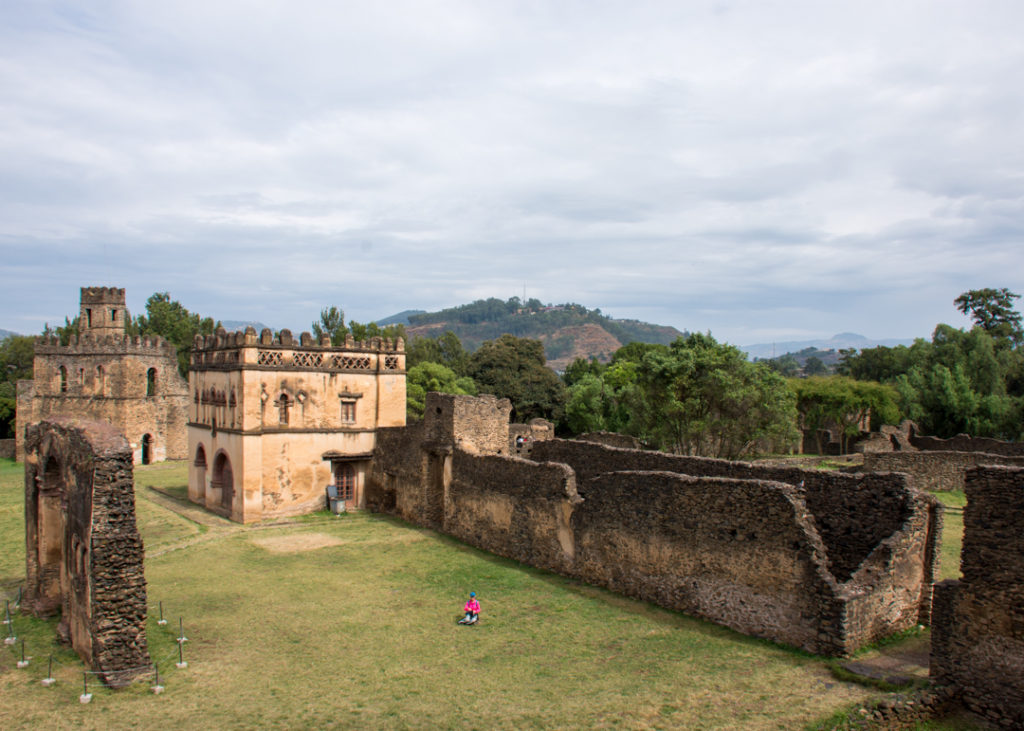
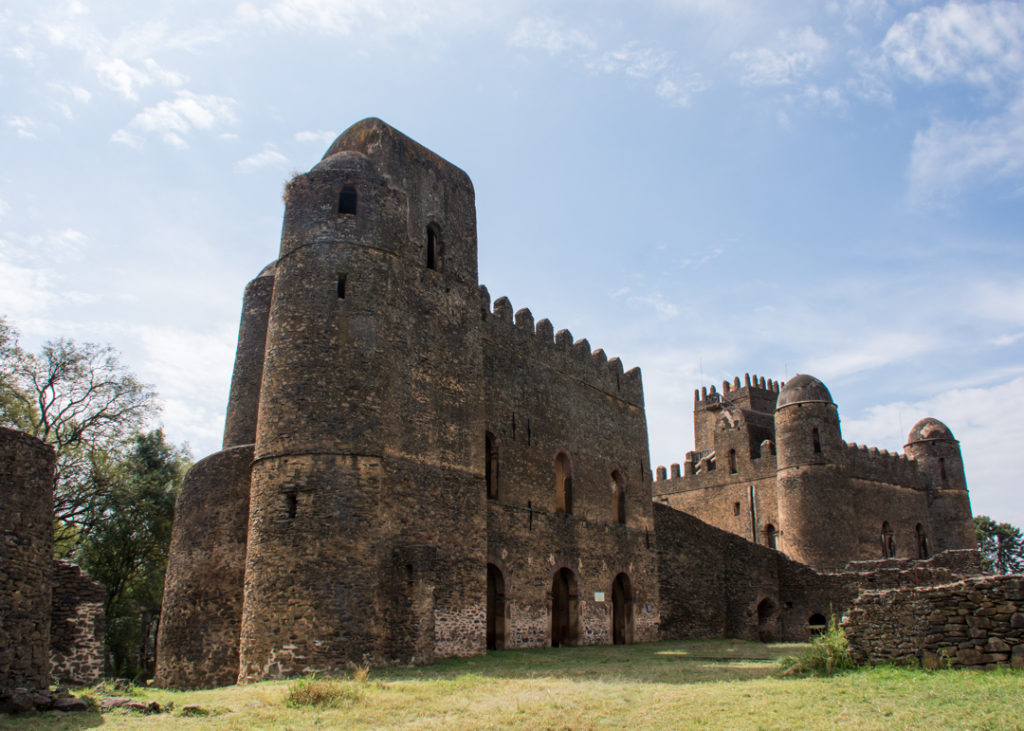
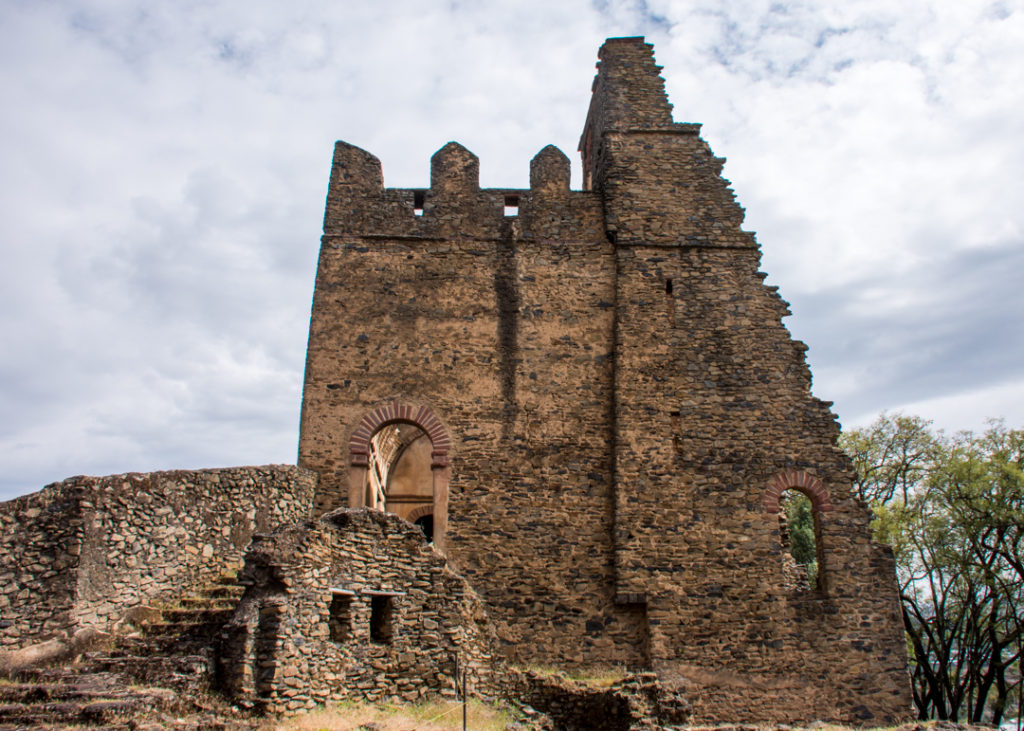
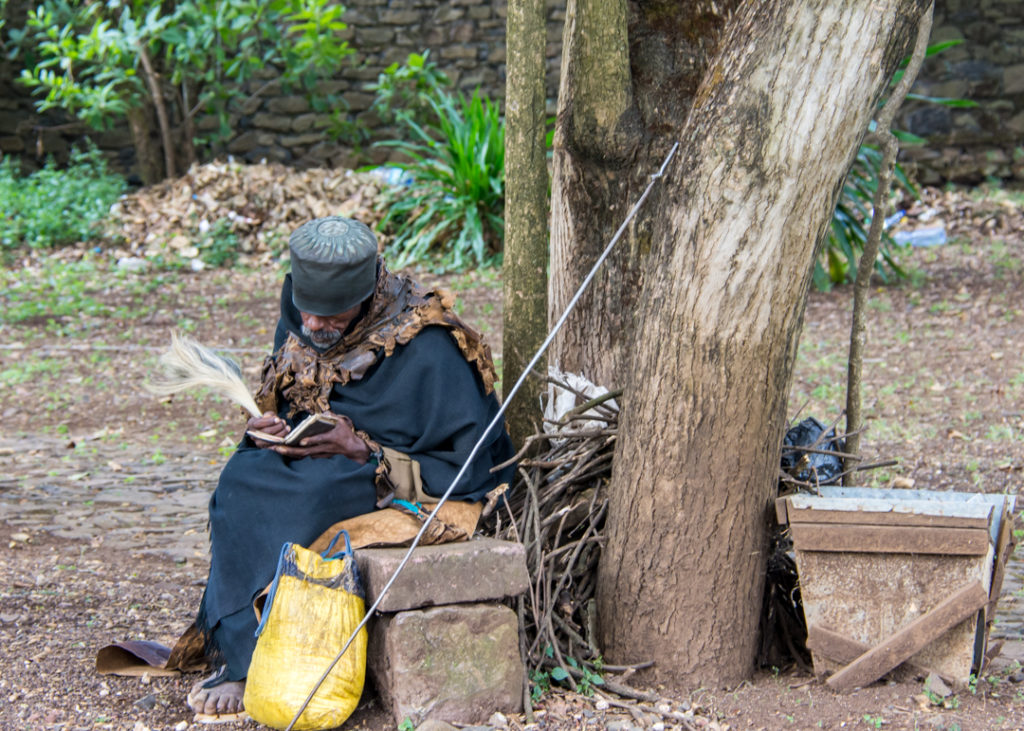
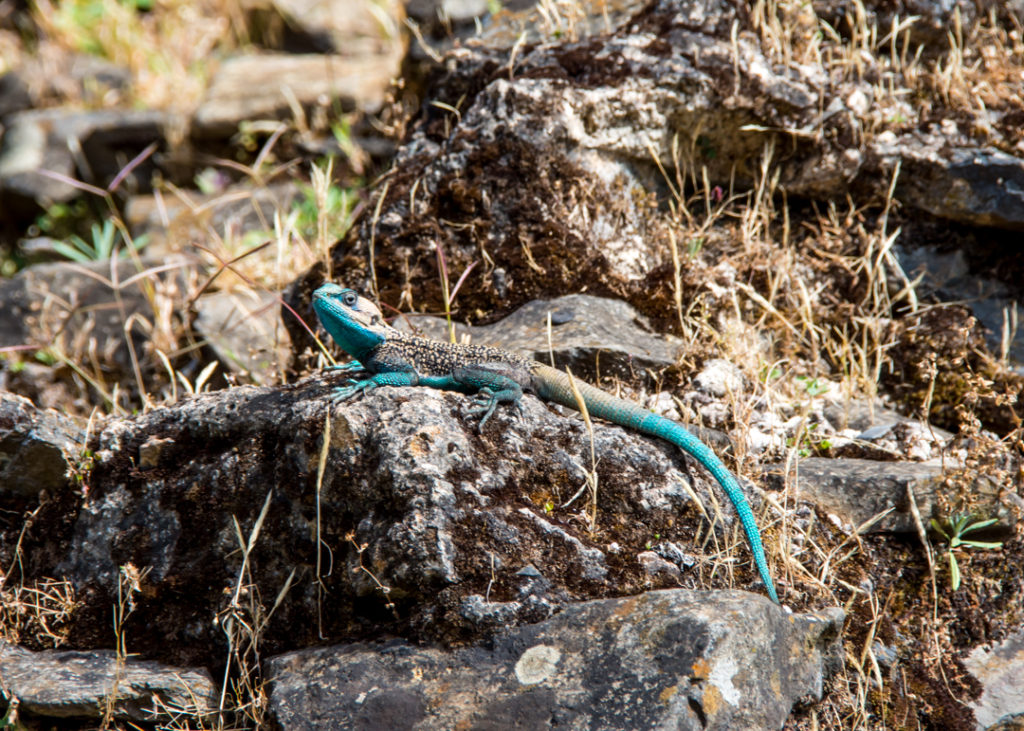
Most buildings are well preserved, but I love a good old crumbly one which lets your imagination picture what it once was…
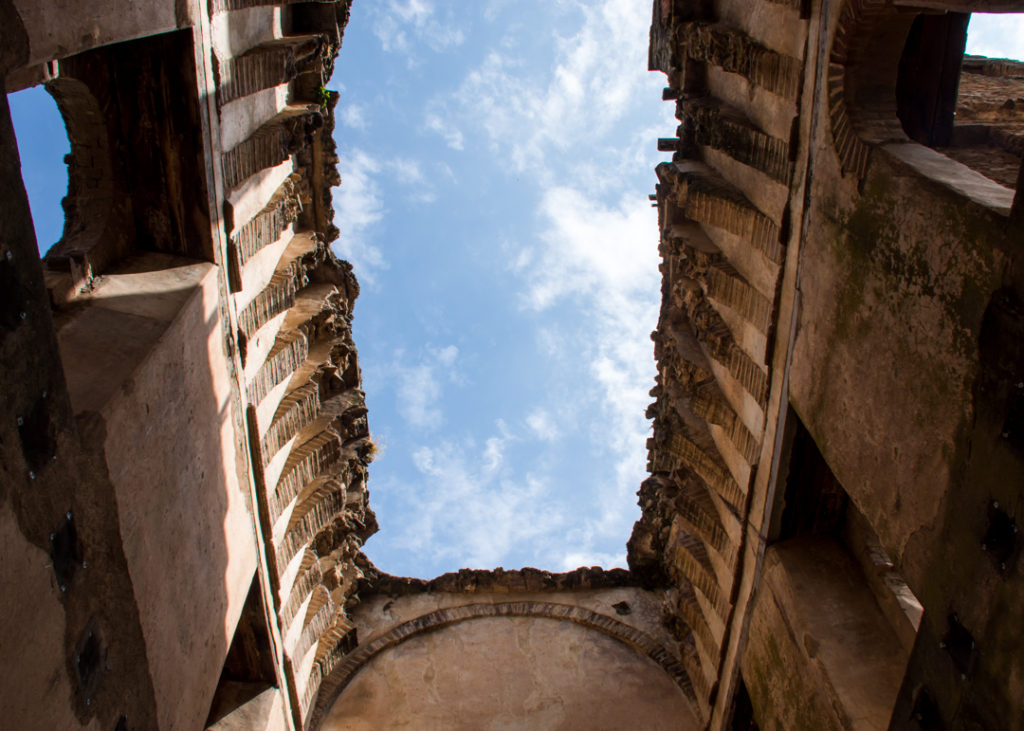
The fact that they are all standing still is marvelous considering all the British wars they’ve survived.
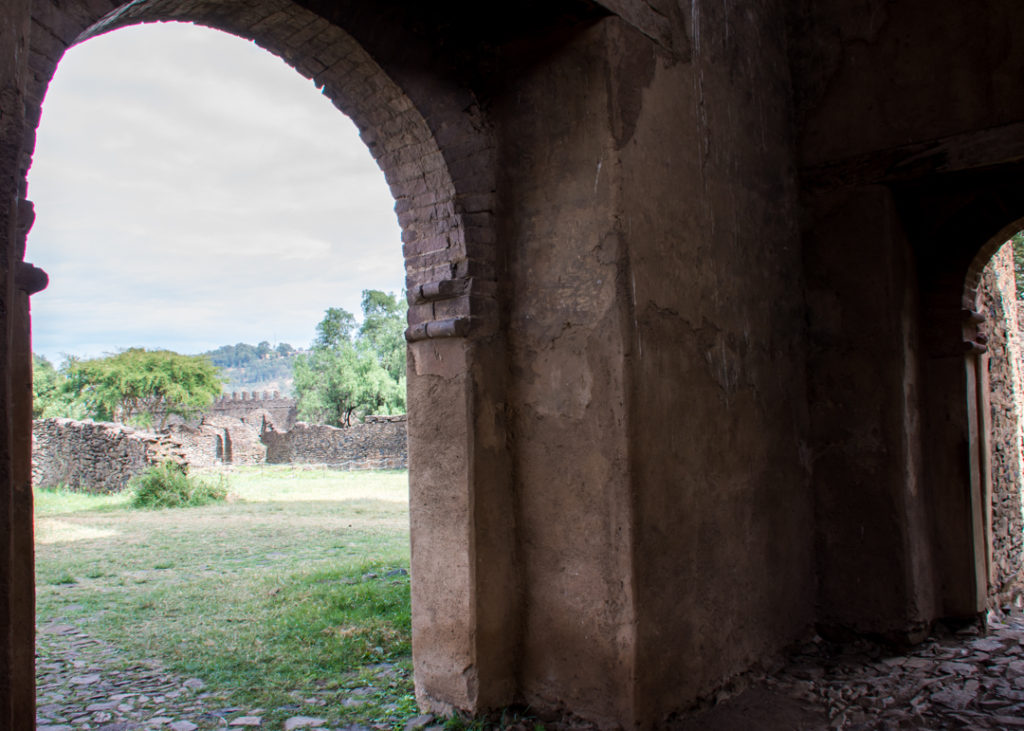
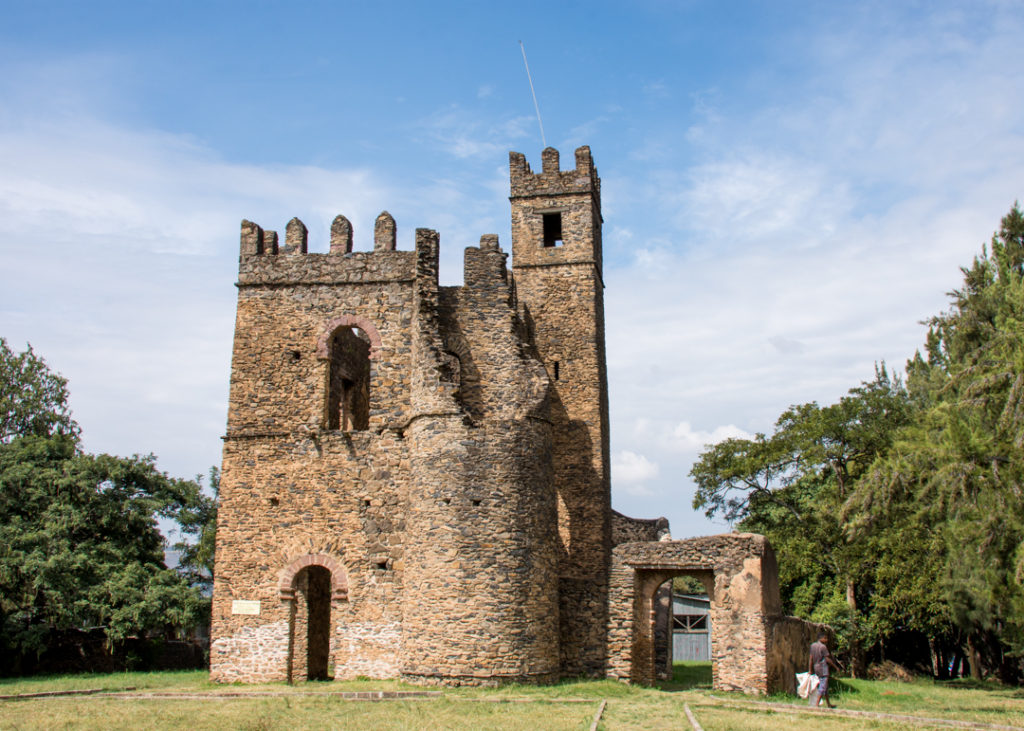
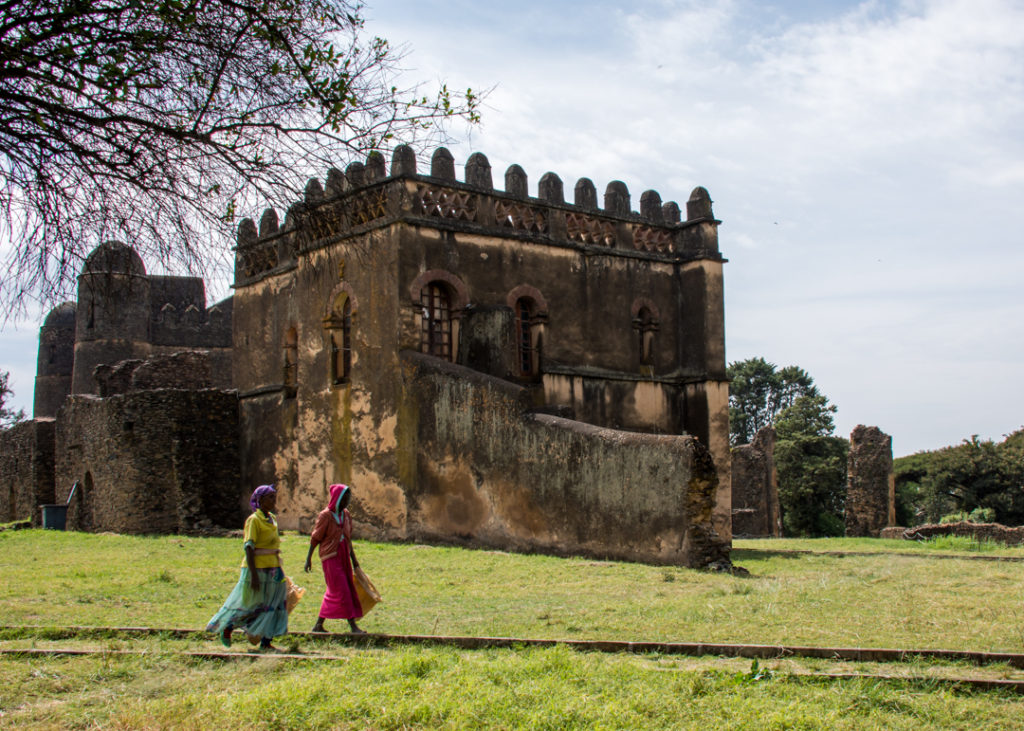
Lion cages reputedly still held live lions until the last one died in 1992 – entertainment or more obscure uses you think?
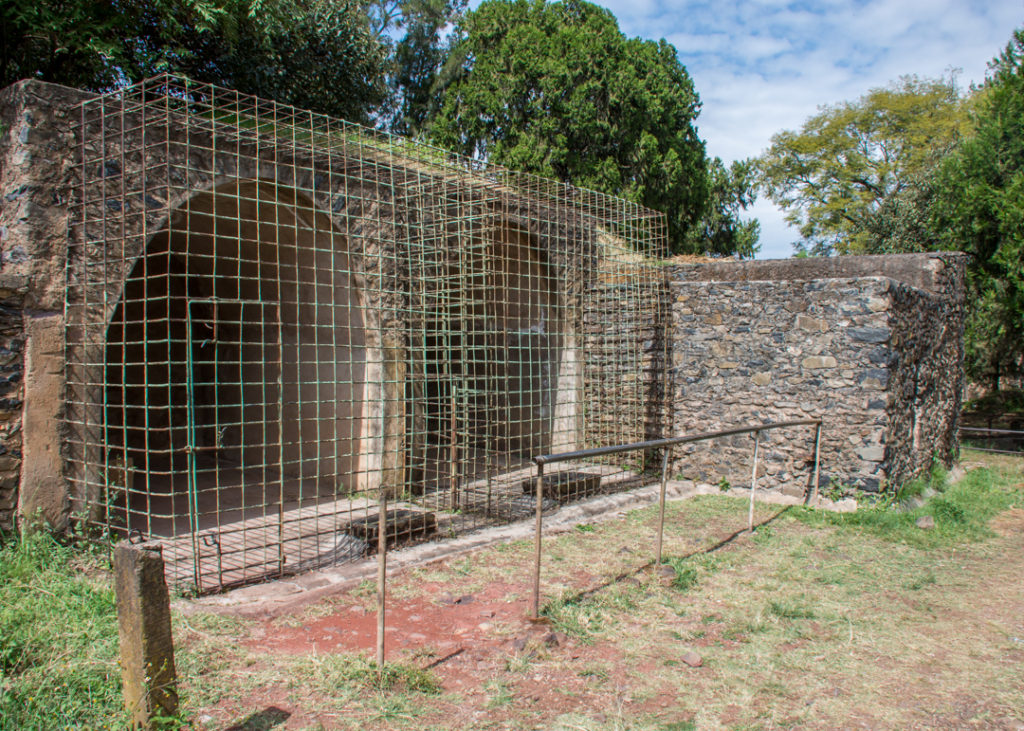
Restoration is ongoing which is great to see, and parts of the process can be observed in a corner of the compound.
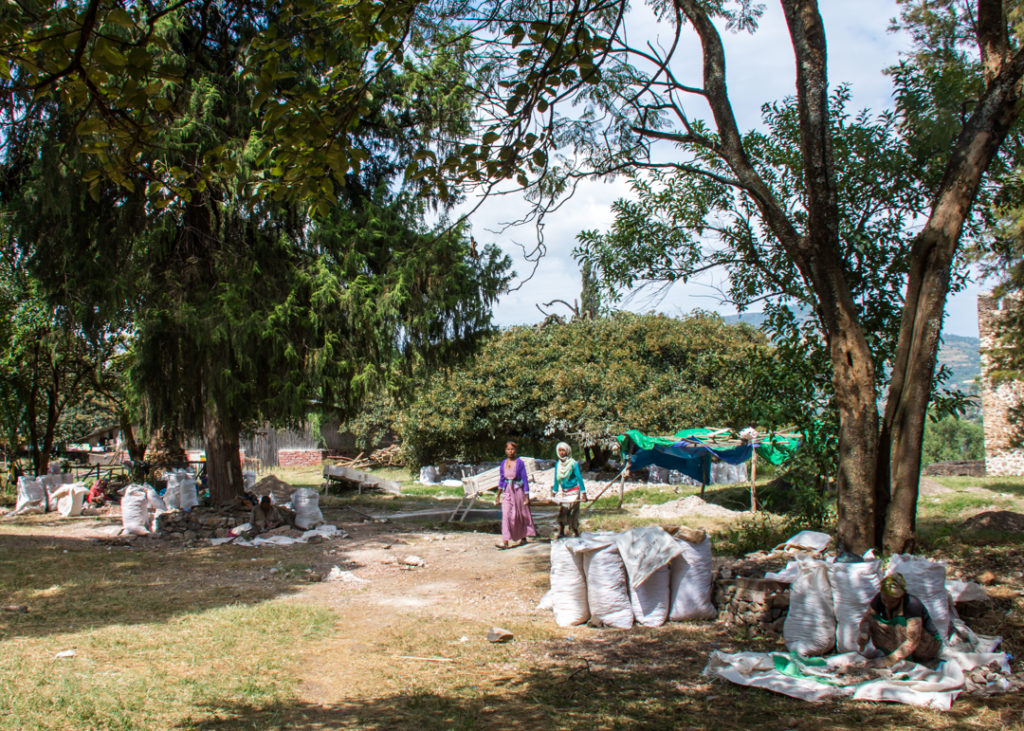
As with everything else we’ve witnessed so far in Ethiopia, it’s all manual as workers diligently break large stones into tiny pieces with only a hammer, their arms and legs covered in dust.
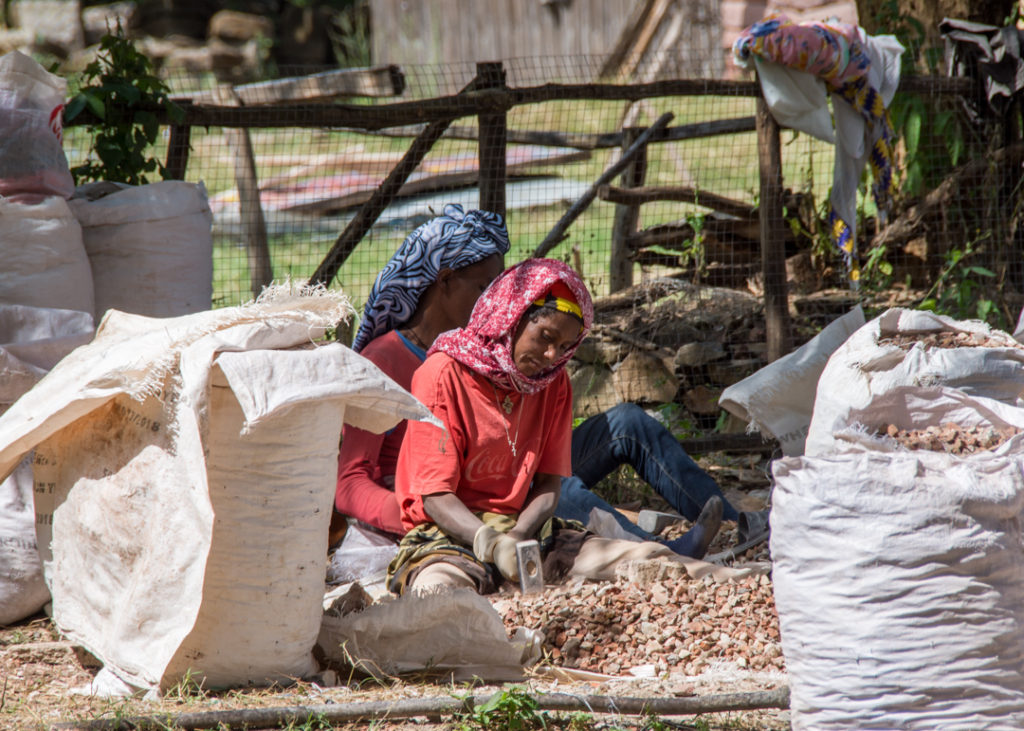
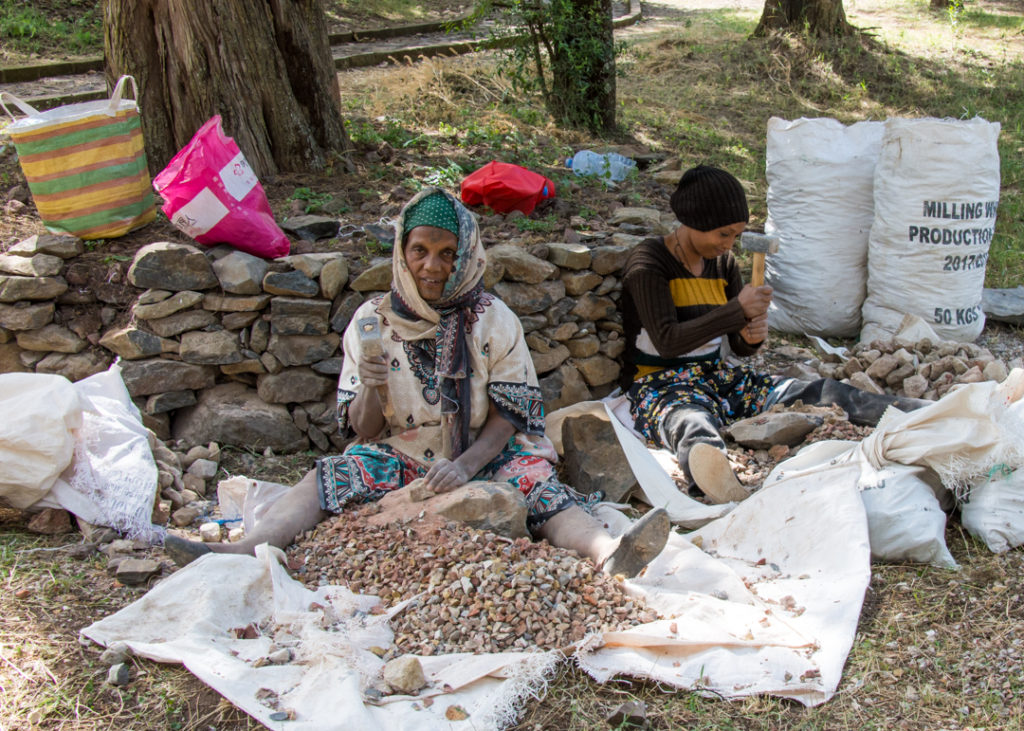
We ended our visit at the stables and the adjoining banquet hall, both very well preserved. We can easily imagine the lavish soirees that must have taken place here.
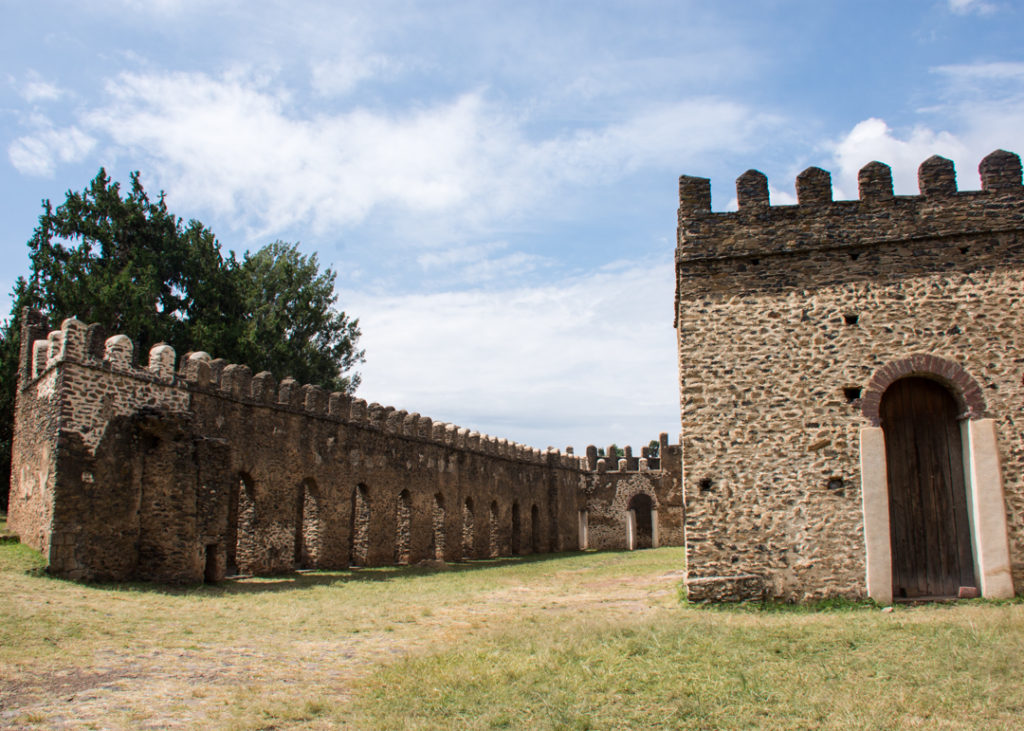
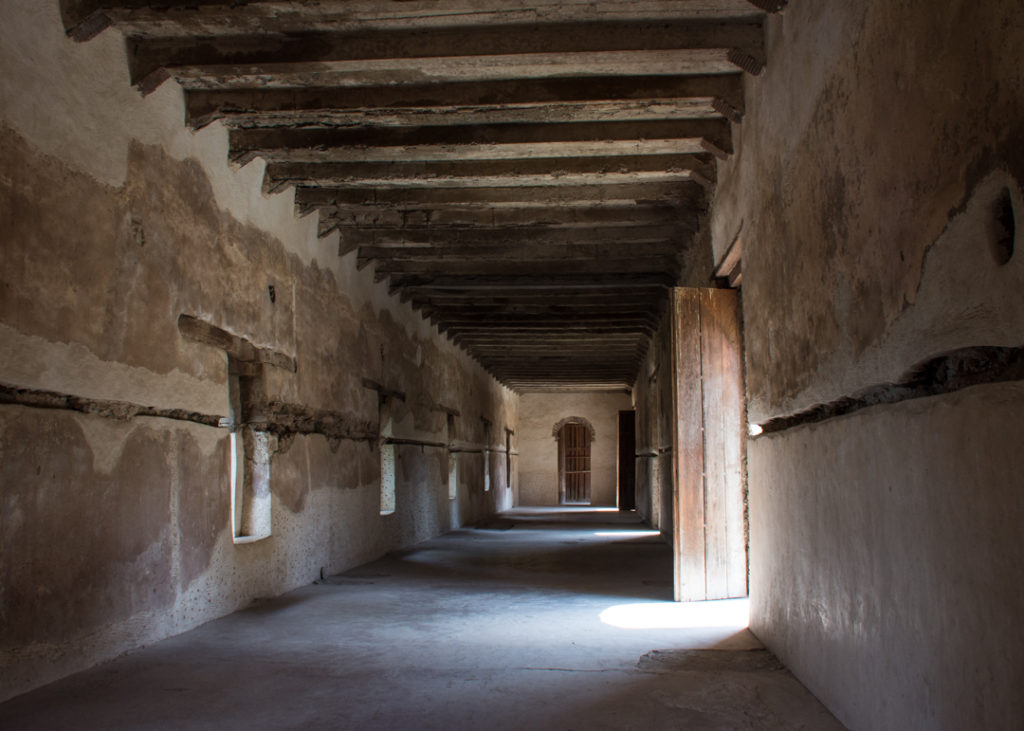
Pops of colors as we exit the royal enclosure with the inevitable market stalls and coffee vendors.
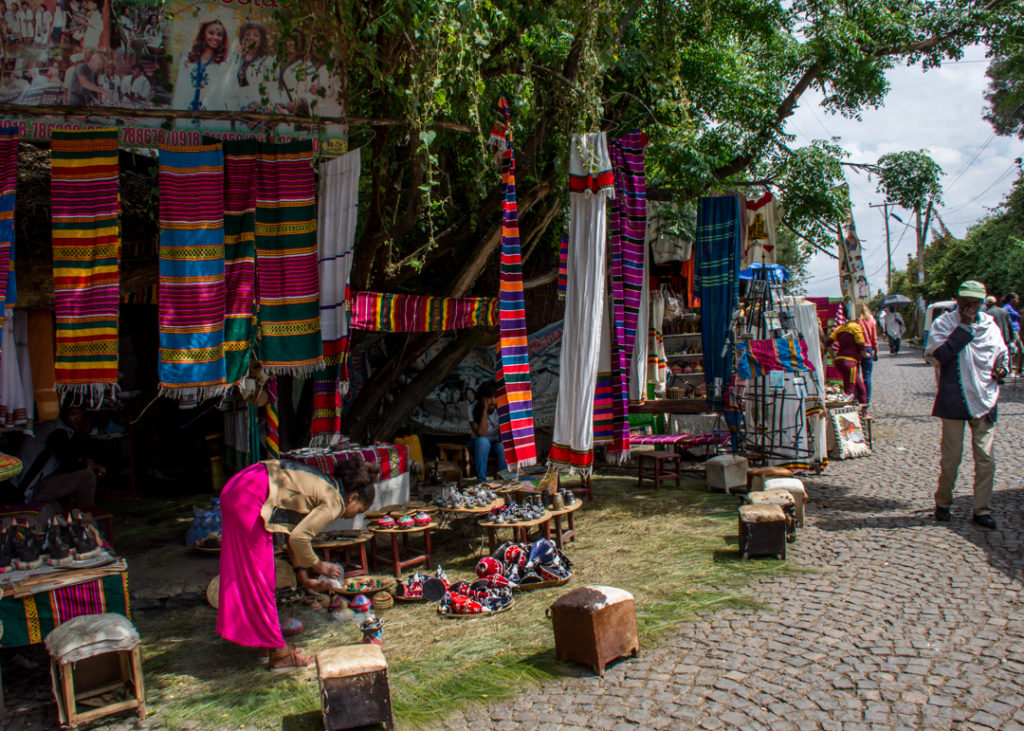
Beautiful poinsettia trees are adding to the colorful streets.
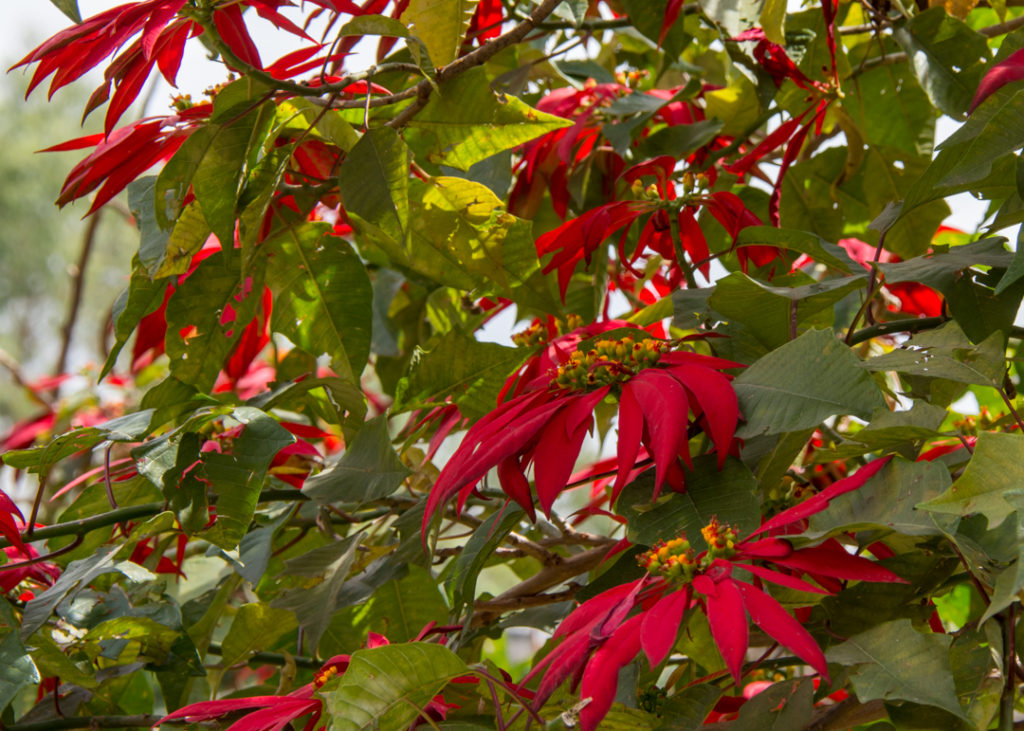
Next stop on our royal tour: Fasilidas’s Bath. The emperor’s bathing palace is in a beautiful setting, a private retreat from the busy city center surrounded by greenery and wildlife.
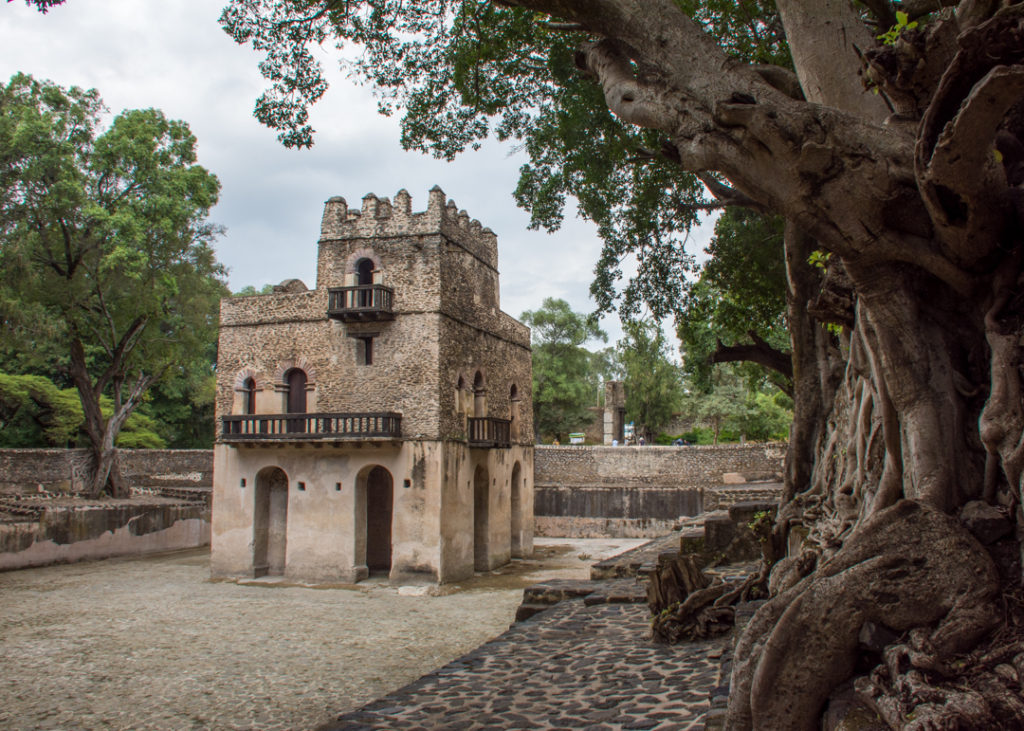
It was said to be the emperor’s second residence.
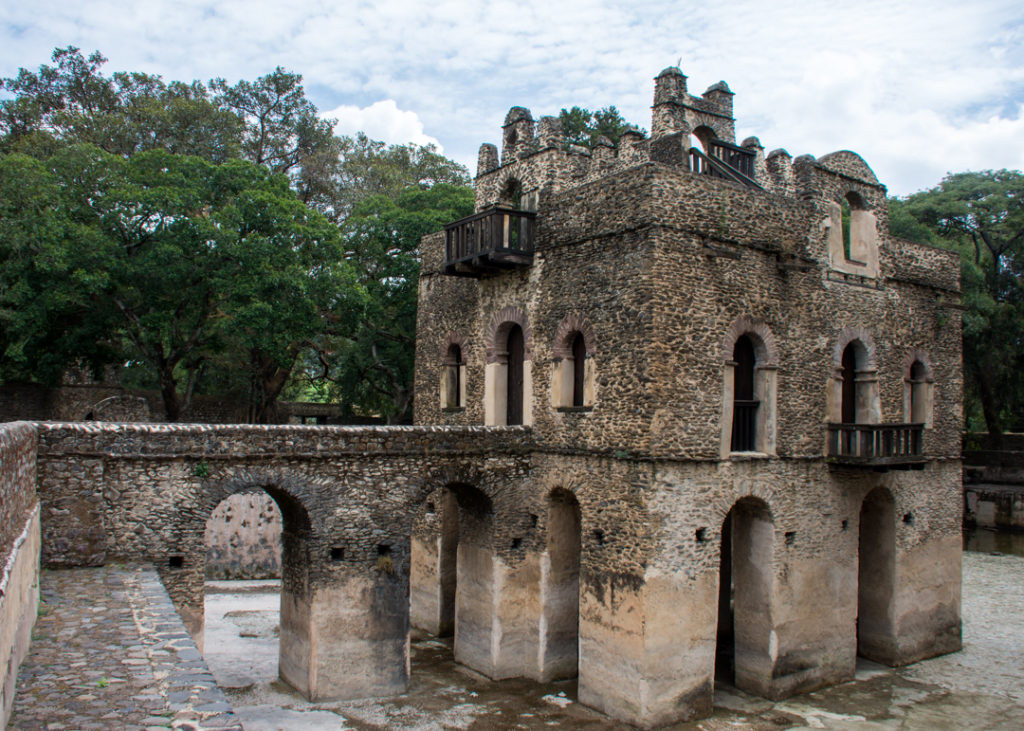
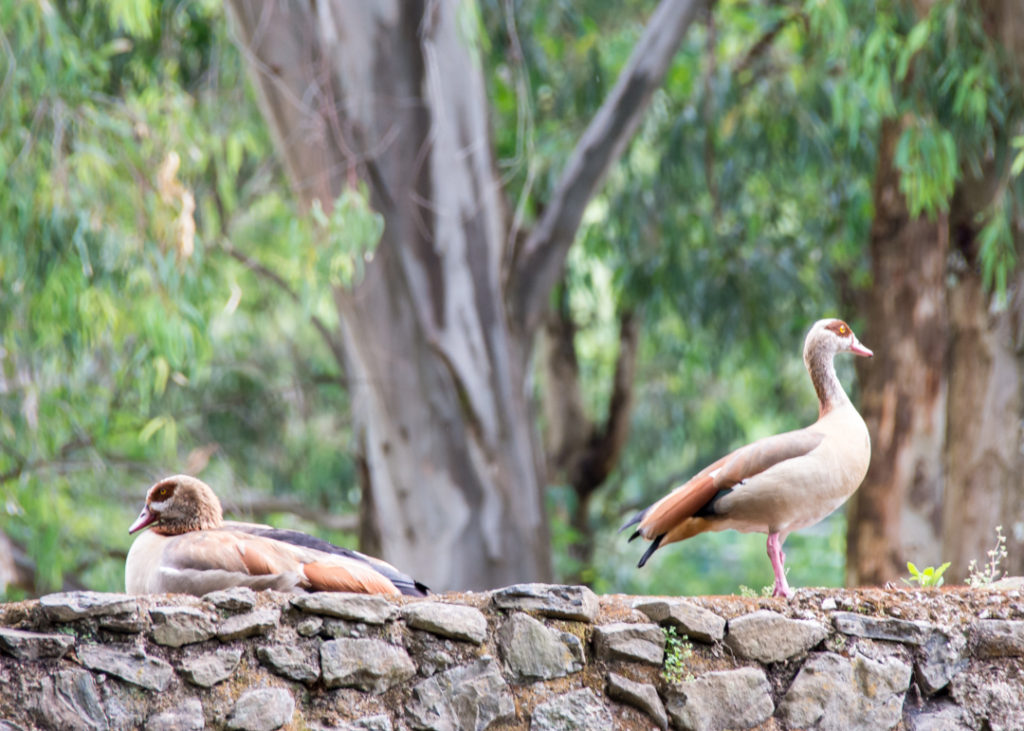
While the pool is dried most of the time, it is still filled with water once a year to celebrate Timkat, the Epiphany in the Ethiopian Orthodox Church. During this remarkable ceremony, which is a traditional re-enactment of the baptism of Christ, thousands of white-robed worshipers plunge into the pool to be blessed and sprinkled with holy water by colorfully attired priests. It must be quite a sight to see!
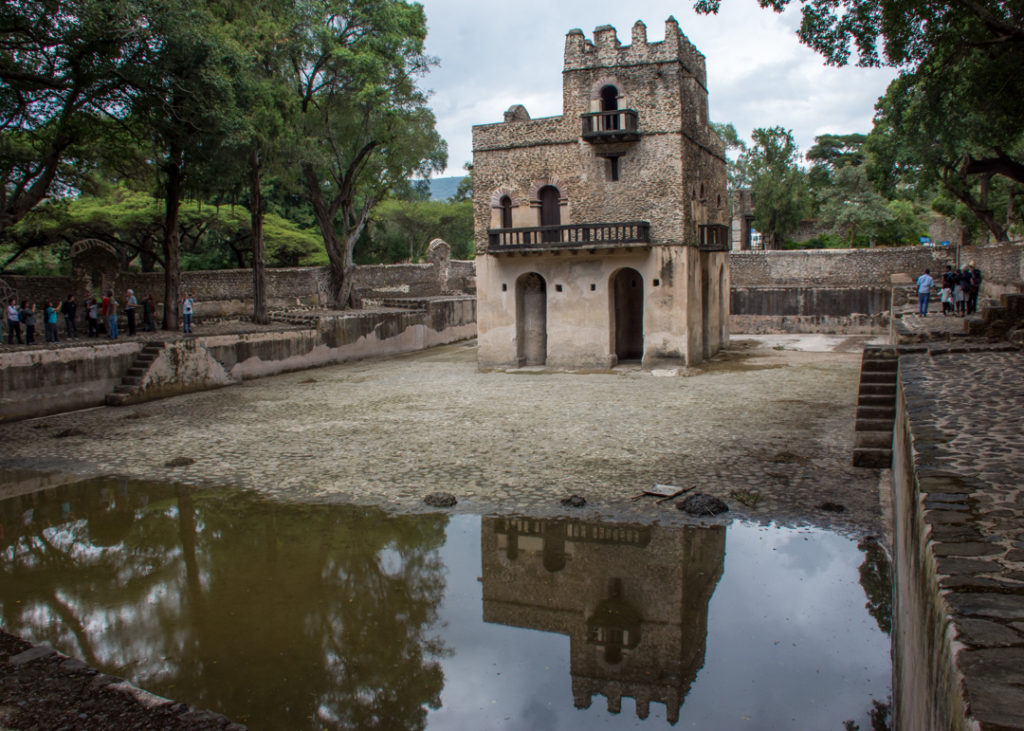
The walls, overgrown with tree roots, reminded me of the ruins of Angkor Wat…
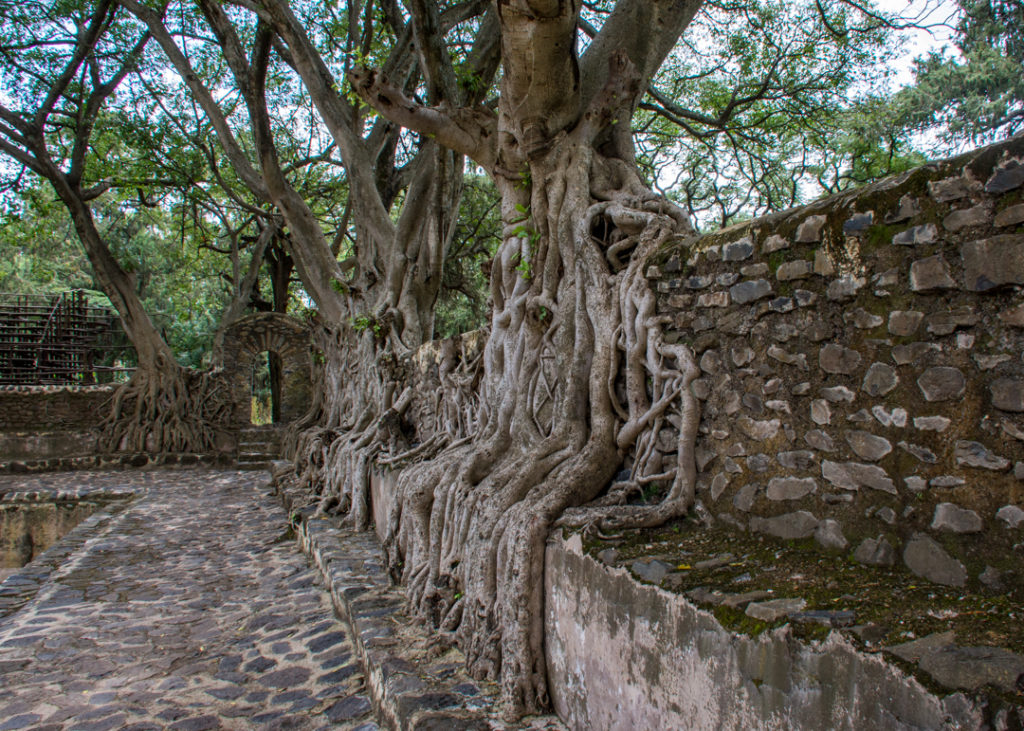
…or perhaps a made-up throne straight out of GoT.
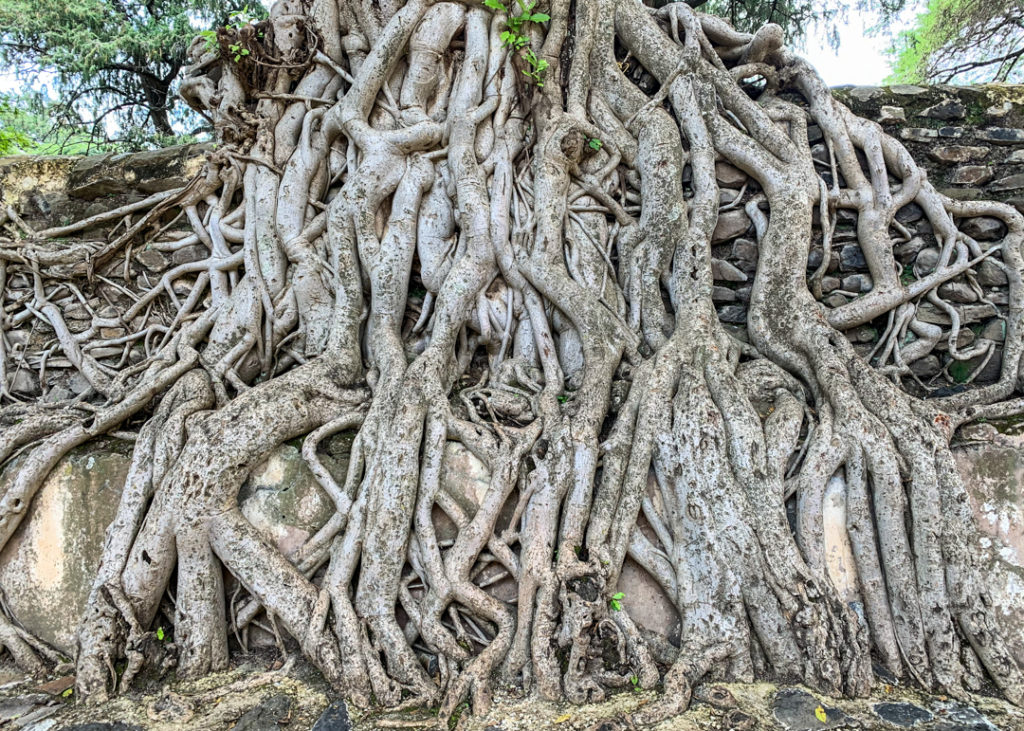
You won’t be able to miss the giant fig tree on your way out – possibly as old as the bath itself.
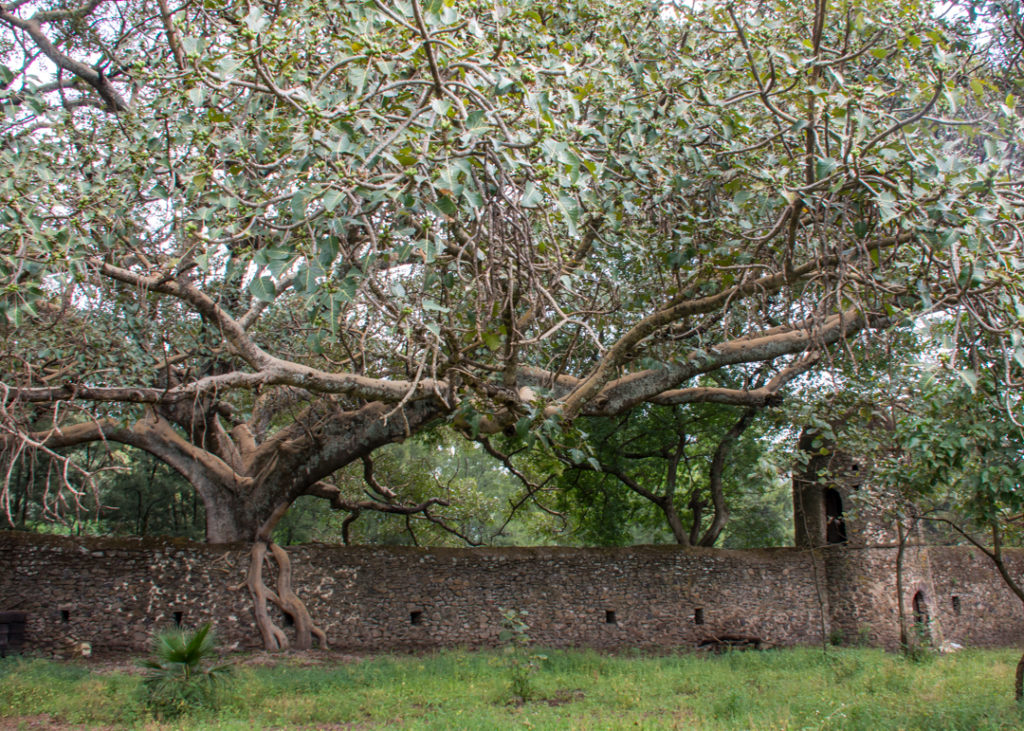
Last but not least, the jewel in the crown of Gondar was saved for day’s end and is not to be missed: Debre Berhan Selassie.
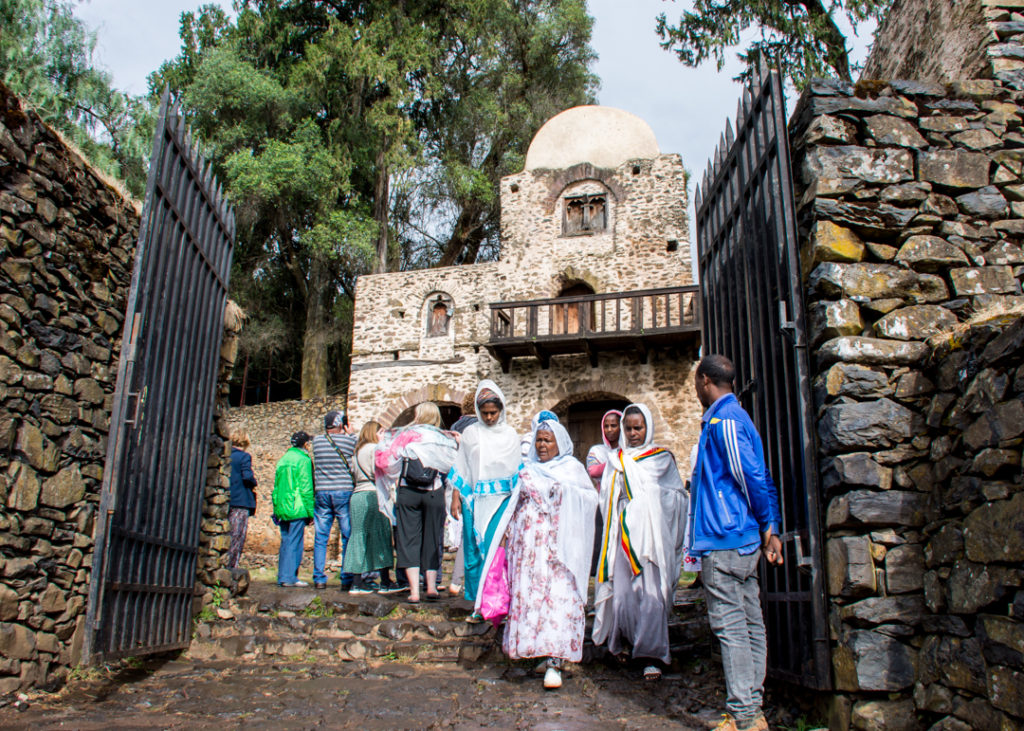
One of Ethiopia’s most beautiful churches is enclosed by a high stone wall (like many buildings around here as you would have noticed) and surrounded by towering juniper trees.
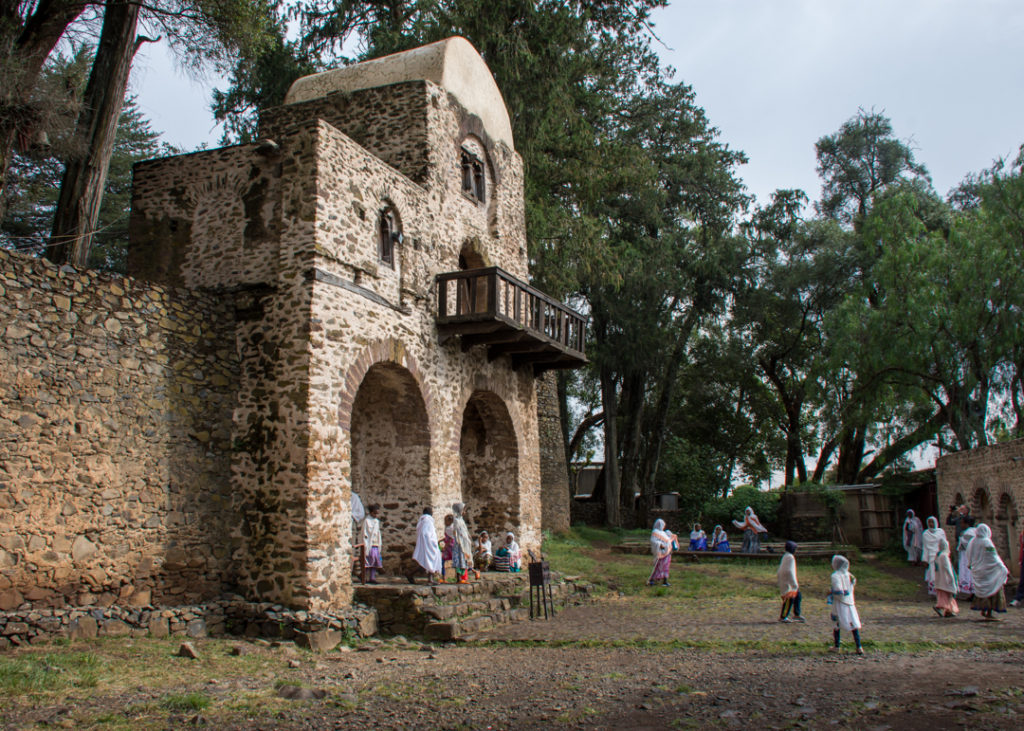
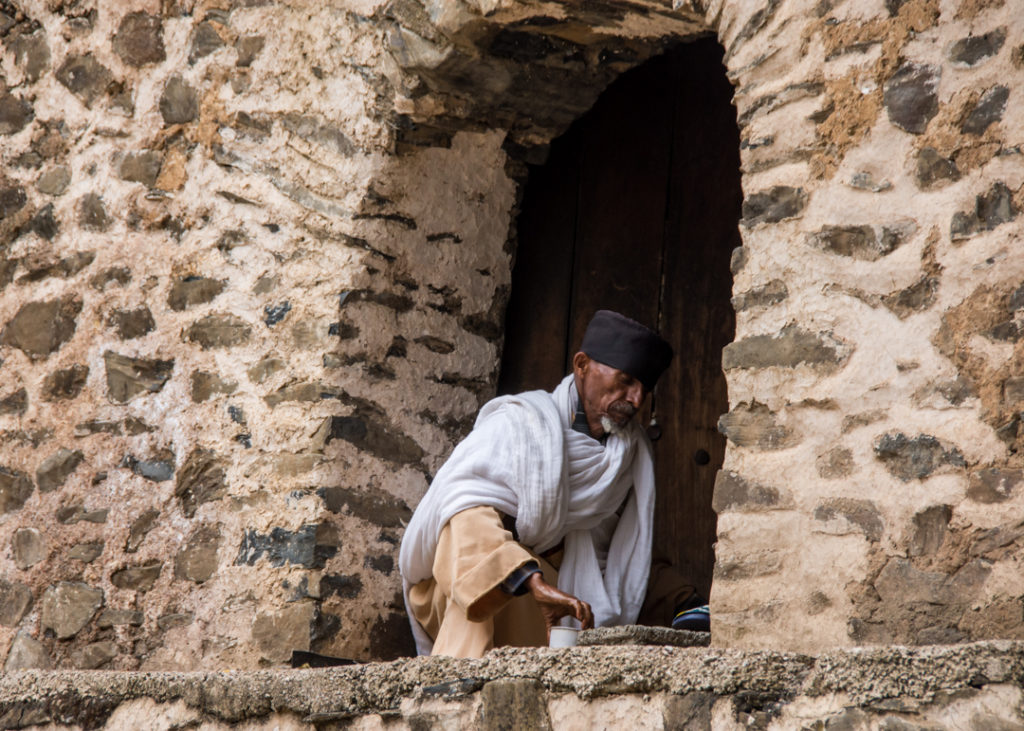
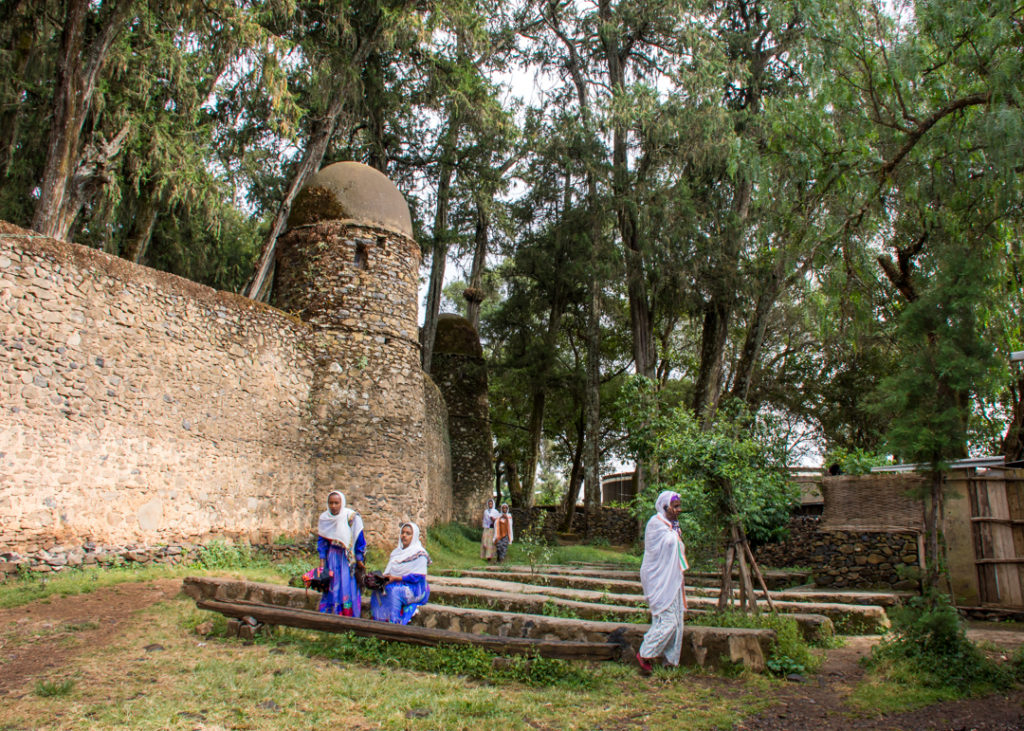
Notice the unique architecture made of brick and bamboo and the medallion on the roof surrounded by seven ostrich eggs signifying the seven days of the creation…
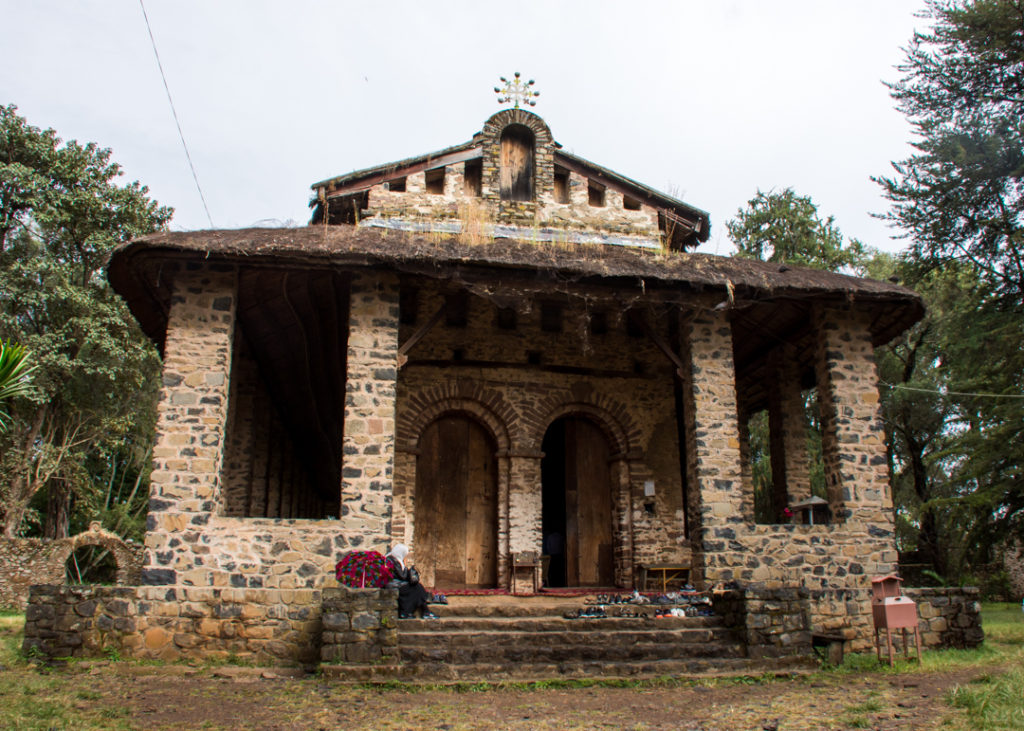
…but what’s most arresting about this church is by far its sumptuously decorated interior.
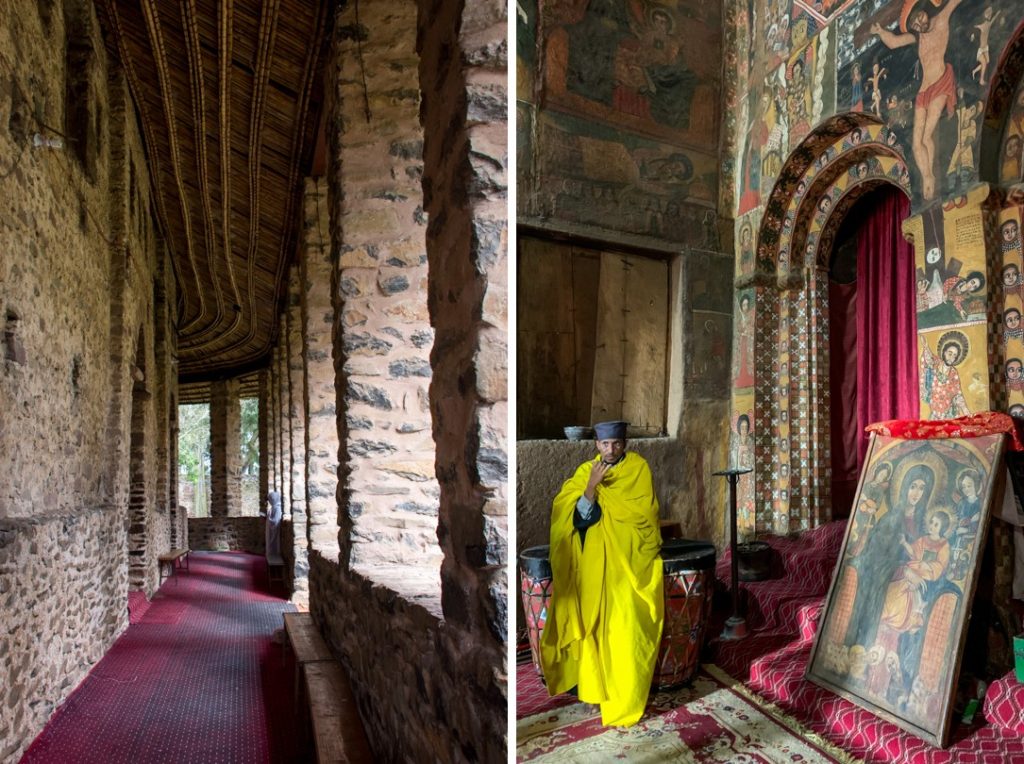
Every walls, corners, and the ceiling are completely covered with painted murals, all original with their colors intact. It’s truly impressive and no wonder it is considered a masterpiece of the Gondarene School of Art.
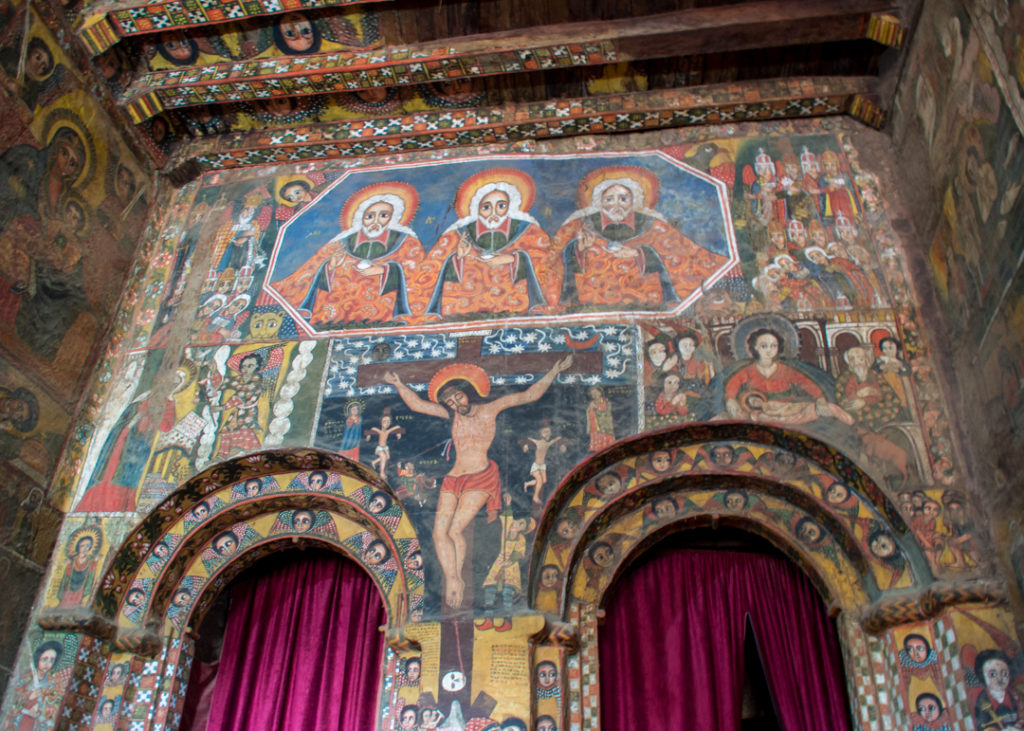
Biblical scenes are vividly depicted all around, covering the life of Christ and various saints.
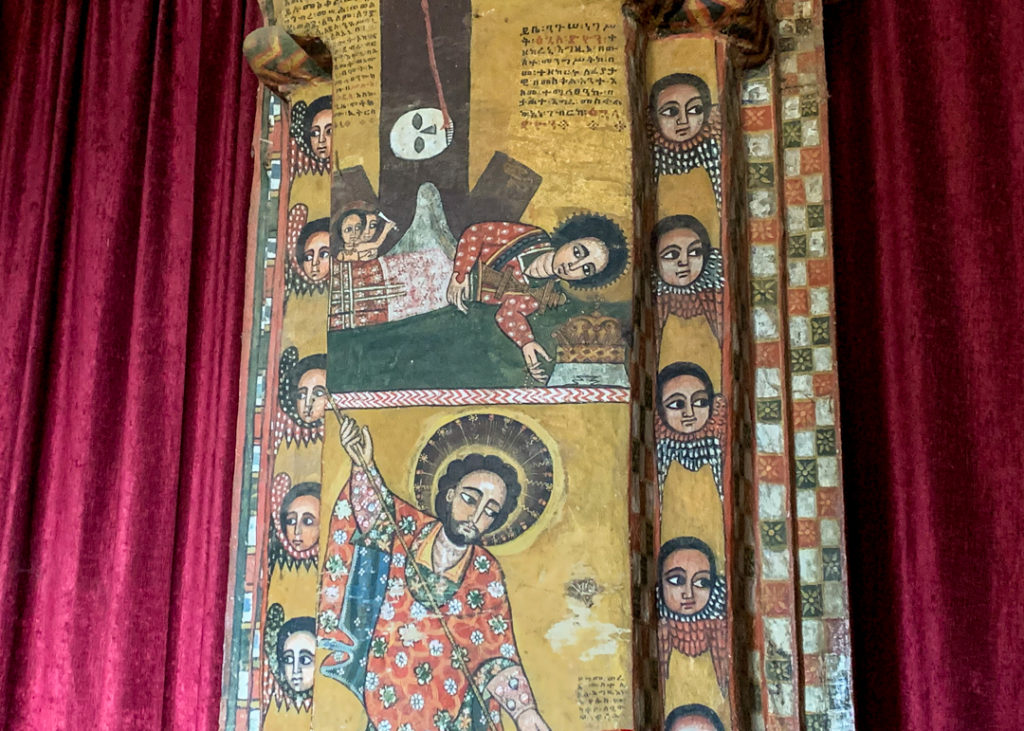
It’s the ceiling though that will probably catch your eyes first or perhaps trigger a joyful smile as you contemplate the 80 angel faces looking down on you in neat rows. It’s probably the most famous ceiling in all of Ethiopia and the most photographed too!
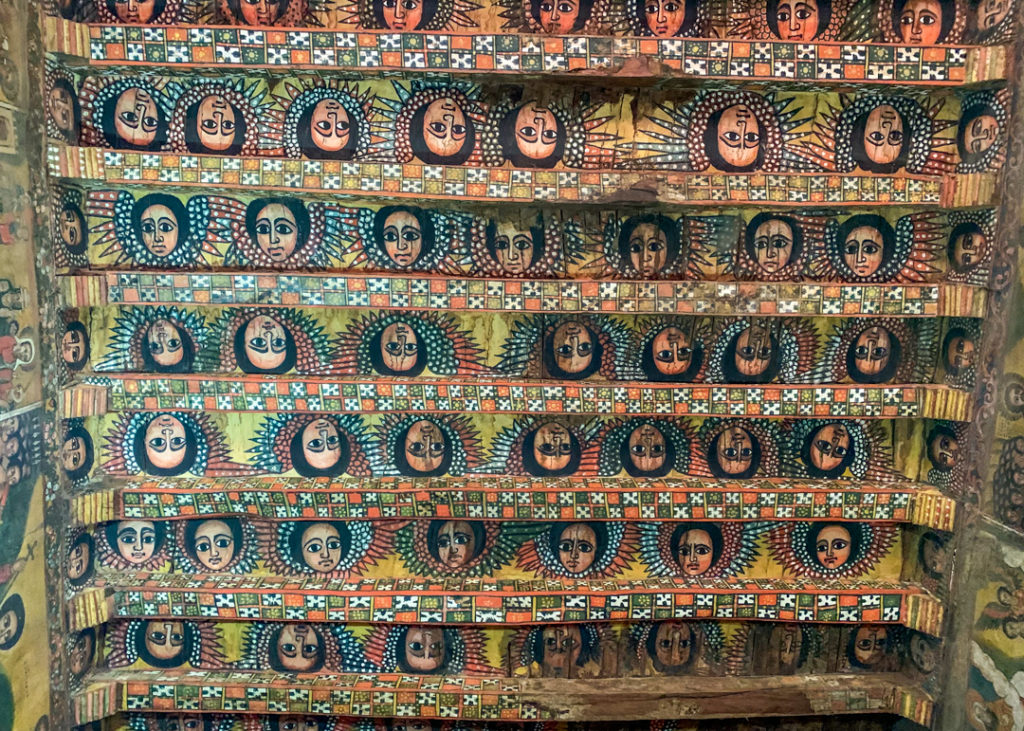
In stark contrast with the cherubic faces above, a rather scary rendering of the devil surrounded by flames is to be found right next to the main door.
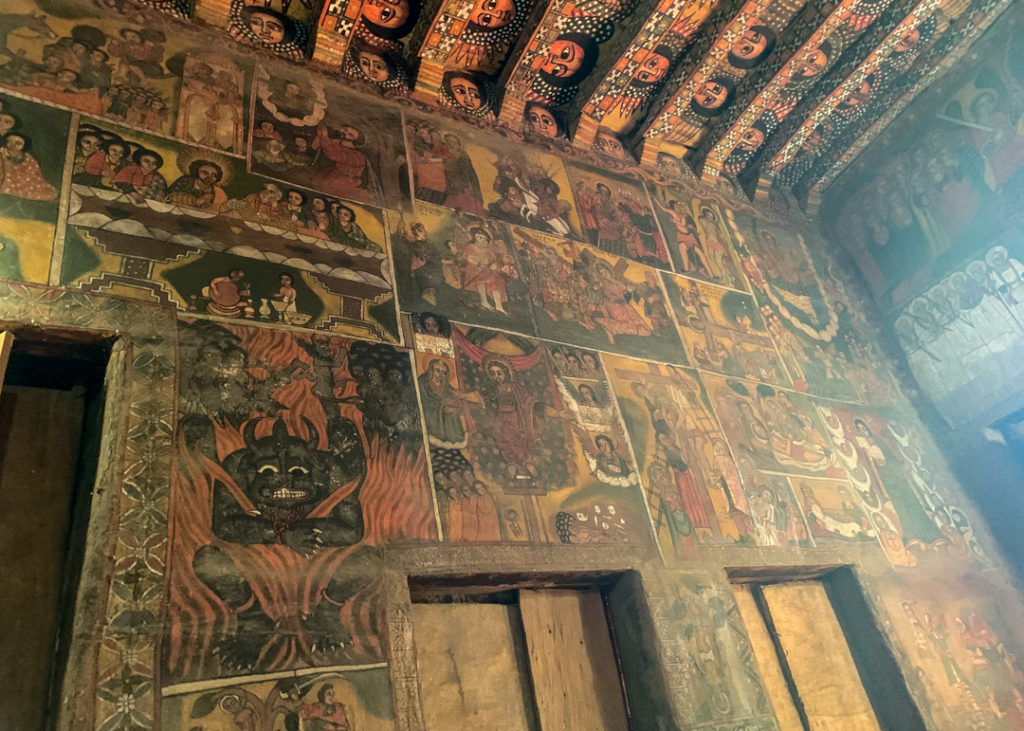
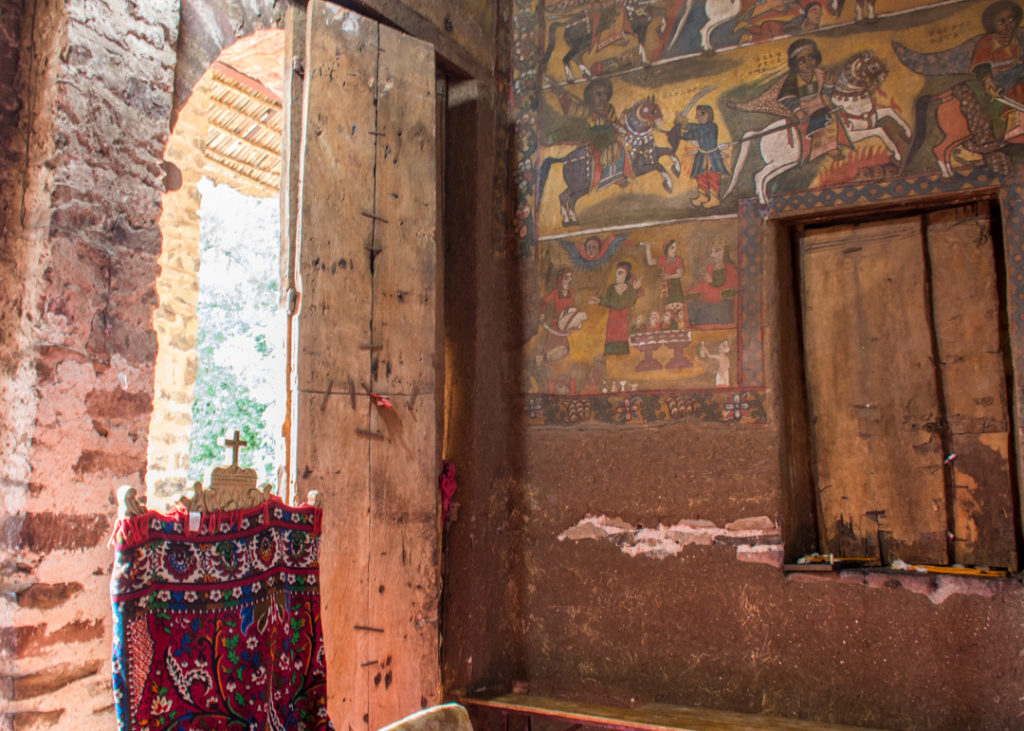
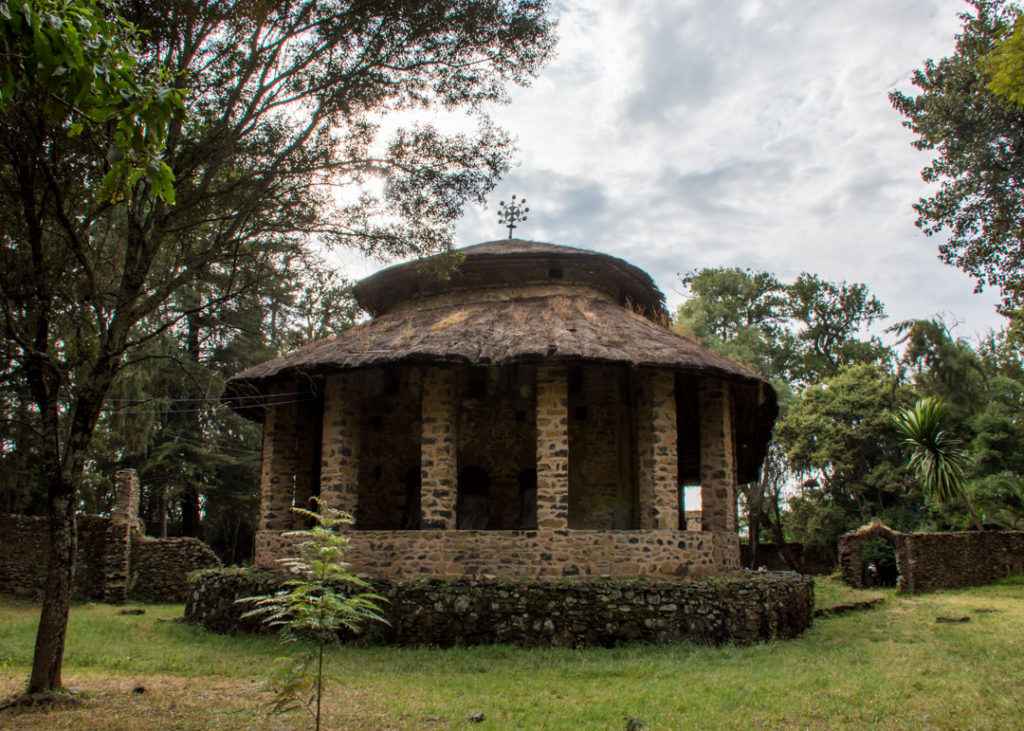
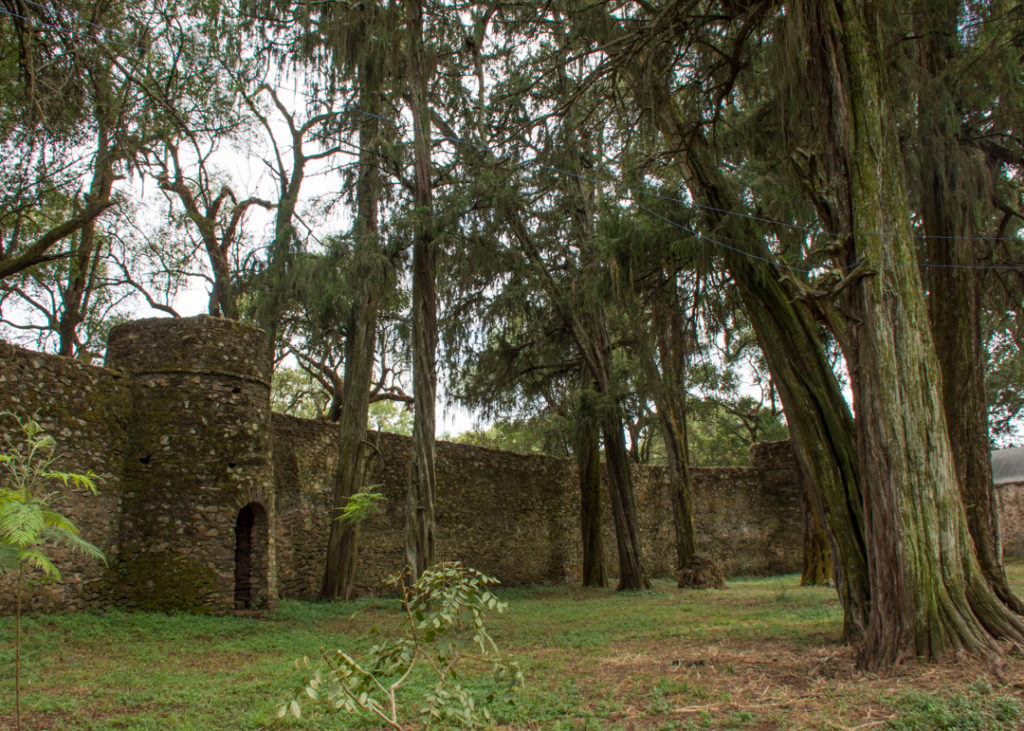
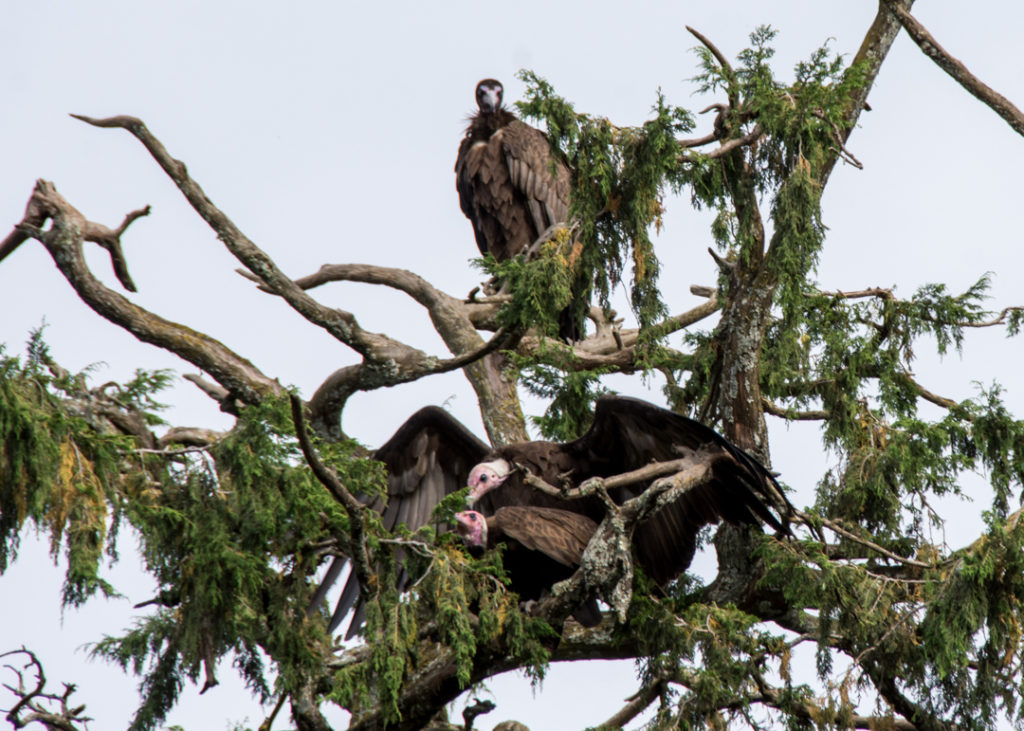
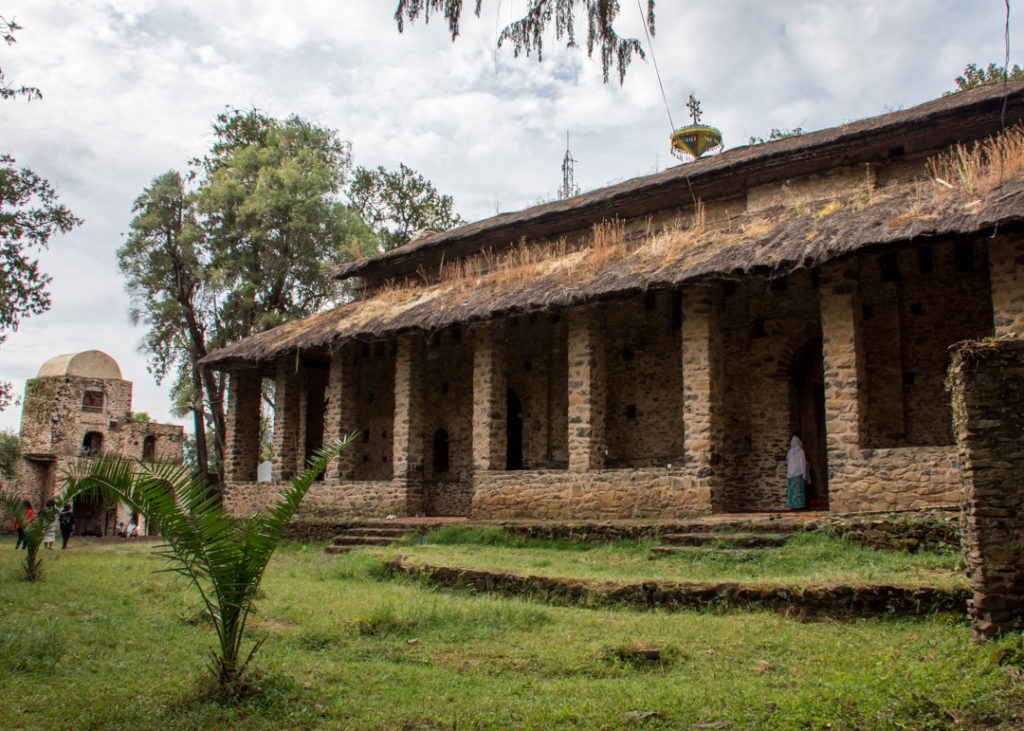
A perfect end to the day with a royal feast at the Four Sisters restaurant in the center of Gondar.
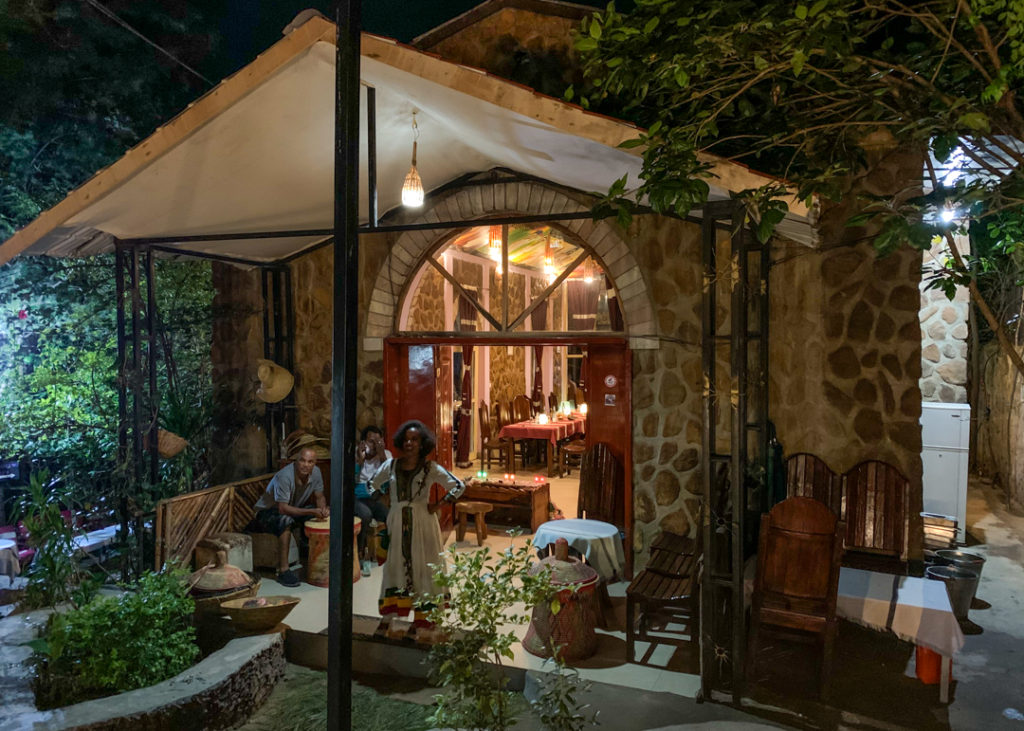
The buffet of traditional food is exquisite, the service fantastic with a coffee ceremony to accompany dessert (teff beignets were a hit) and it’s also where you’ll be able to taste the local honey wine – a sweet and delicious treat.
